
Institut Français et Ville de Saint-Etienne
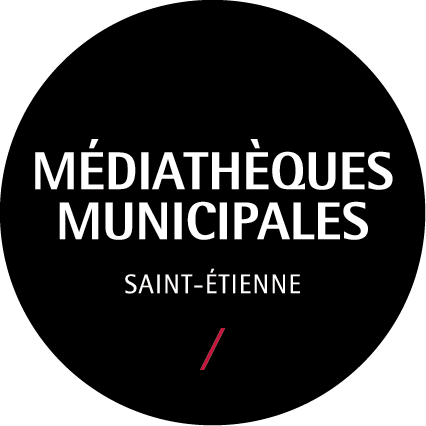
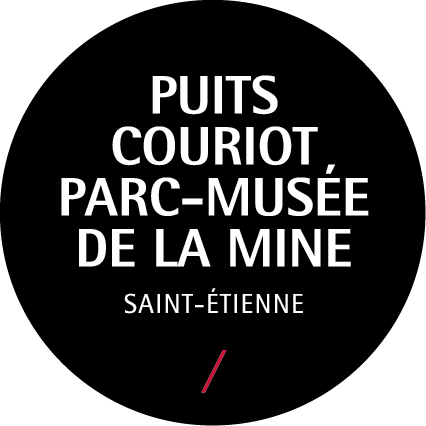
Puits Couriot Parc-Musée de la Mine
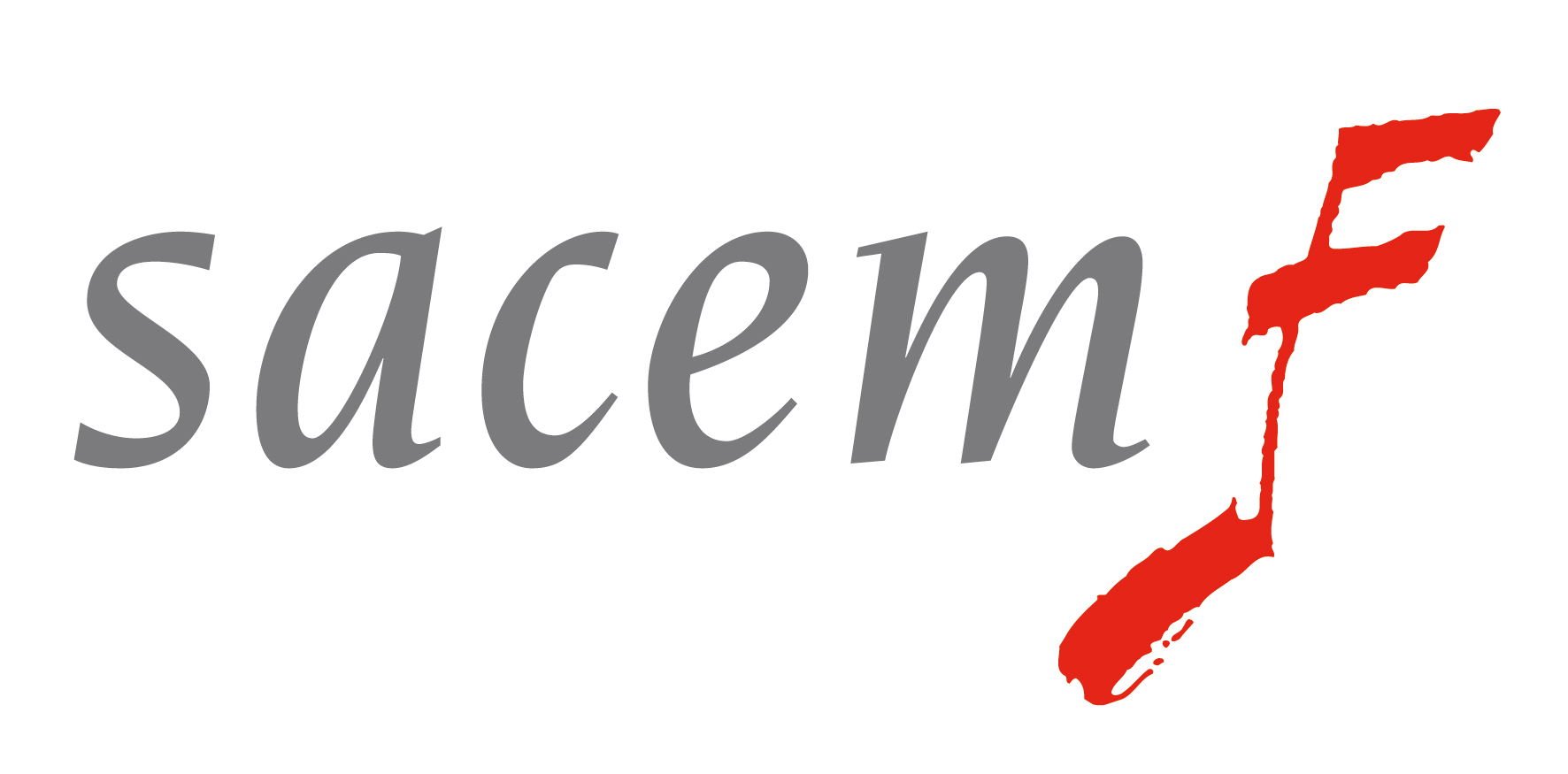
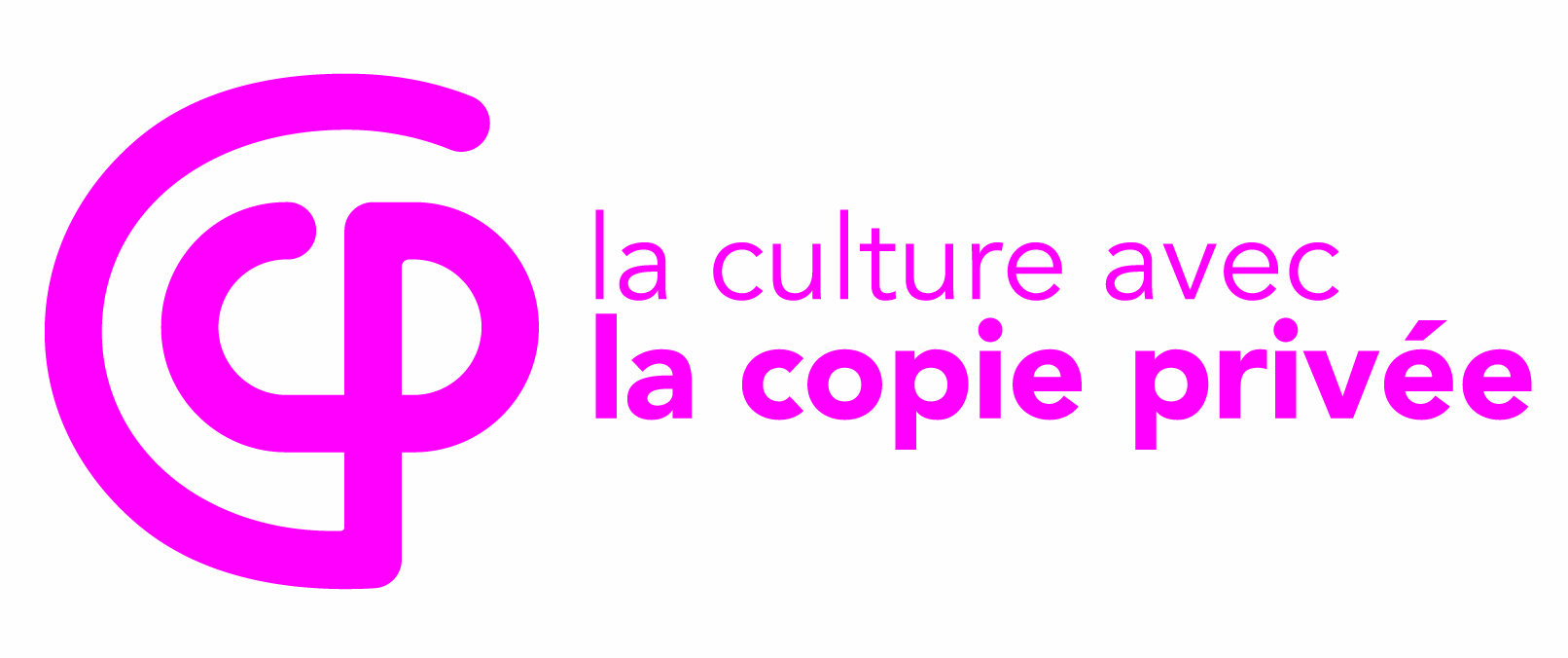
Opus Centrum Ensemble
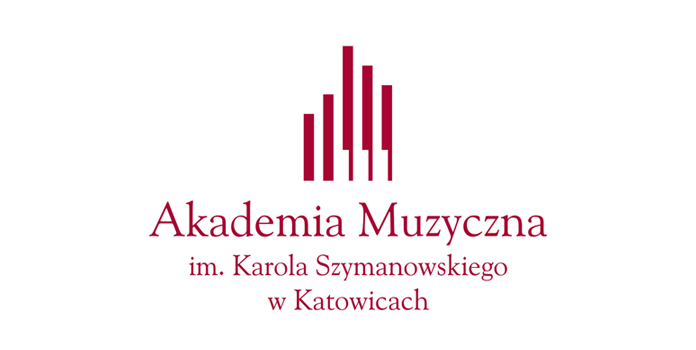
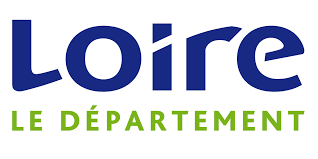
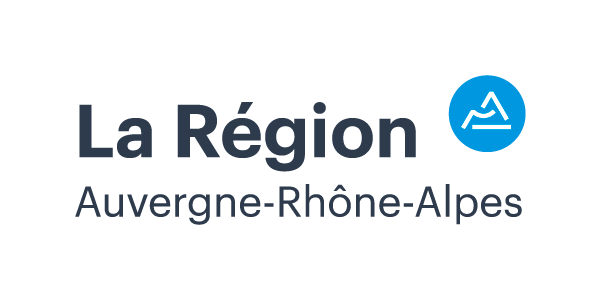
4 May - 30 June 2021
exchange, education, culture, sciences
- 4 May 2021 - |
||
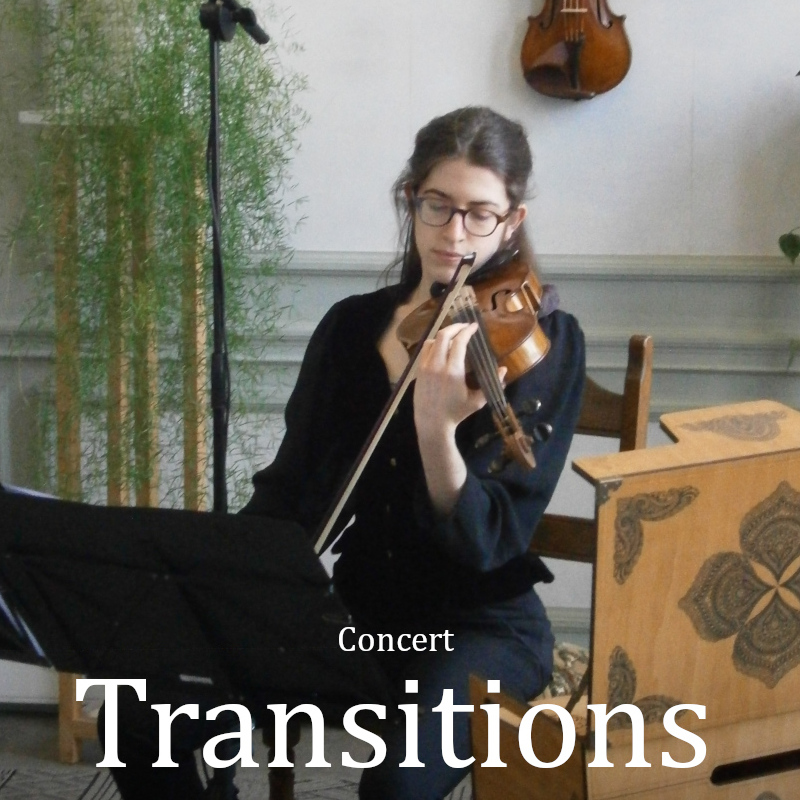 |
ConcertTransitionsRecital by Noémie Saintandré (violin and Sampo) |
|
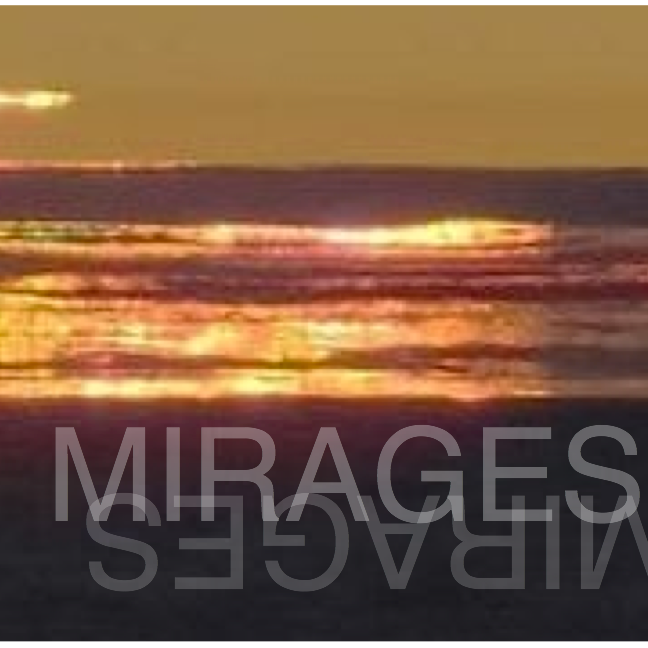 |
ExhibitionMiragesAudio-visual works from our call for works |
|
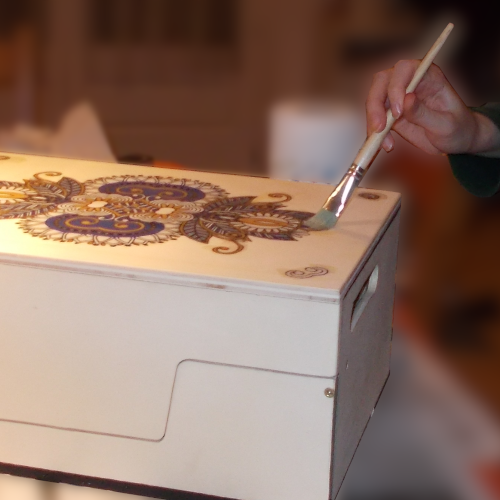 |
Exhibition
Sampo - the digital music boxExhibition on the development of a 21st century instrument |
|
- 18 May 2021 - |
||
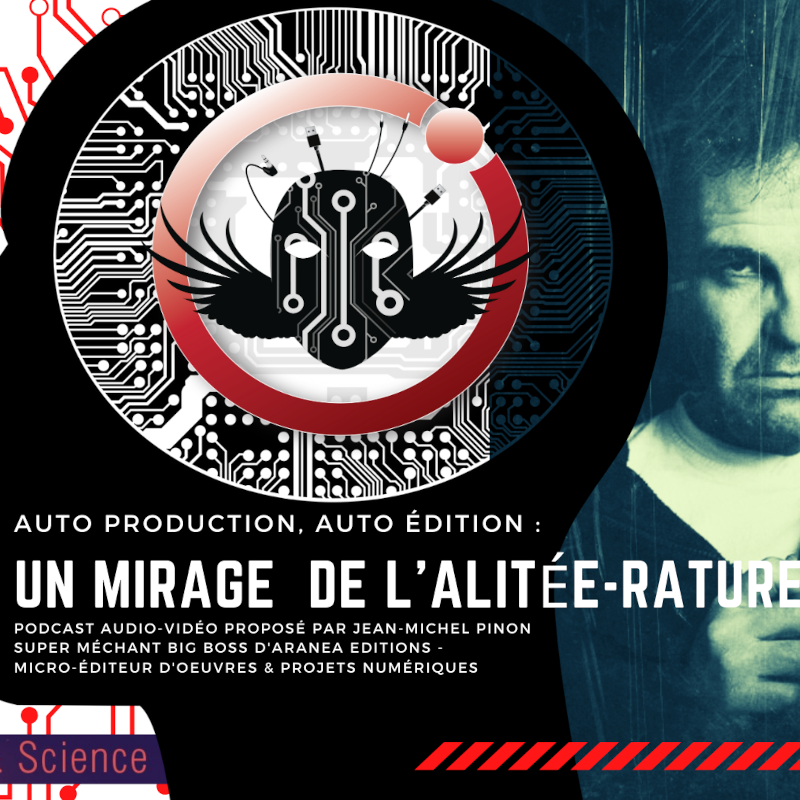 |
ConferenceSelf-production, self-publication:
|
|
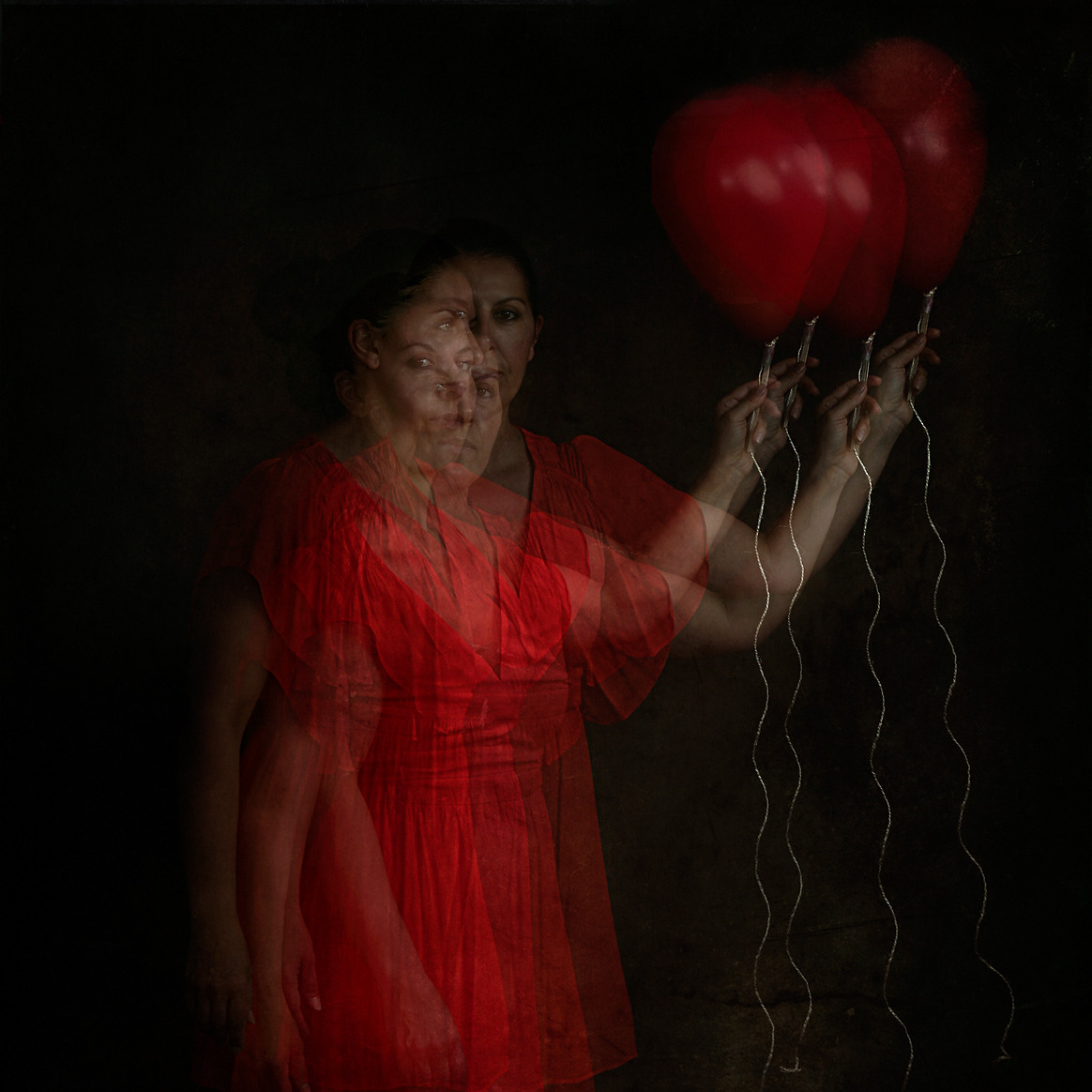 |
ExhibitionLives of miragesPhoto exhibition by Axelle Reboux |
|
- 1 June 2021 - |
||
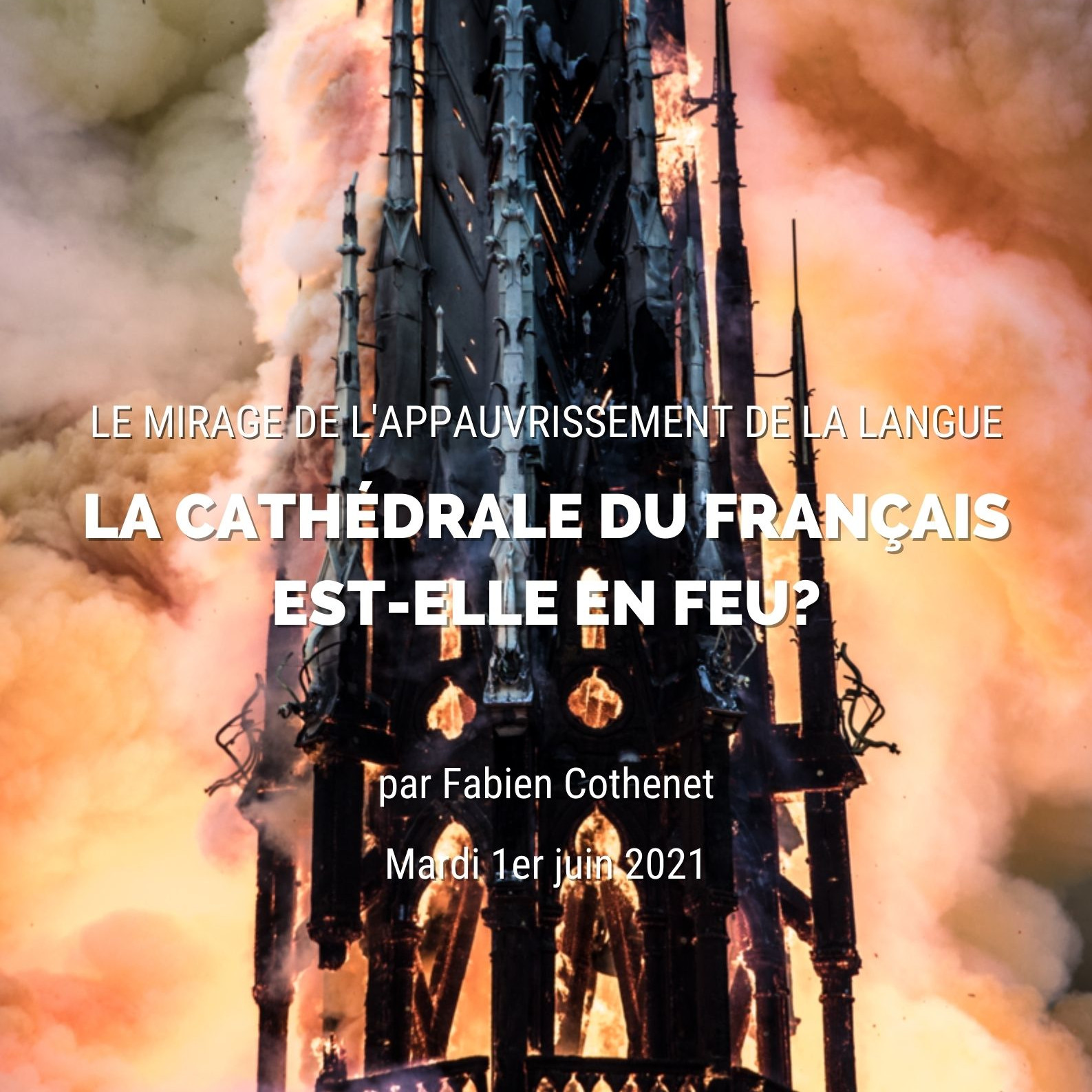 |
ConferenceThe mirage of language impoverishmentConference by Fabien Cothenet |
|
- 15 June 2021 - |
||
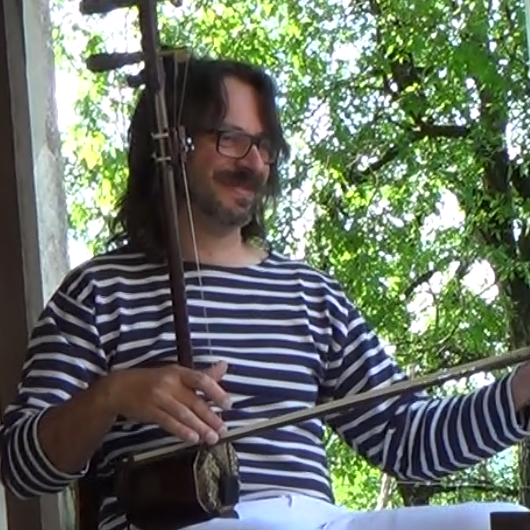 |
ConcertImprovised JourneyImprovisations by Nicolas Vincent (traditional instruments and Sampo) |
|
- 29 June 2021 - |
||
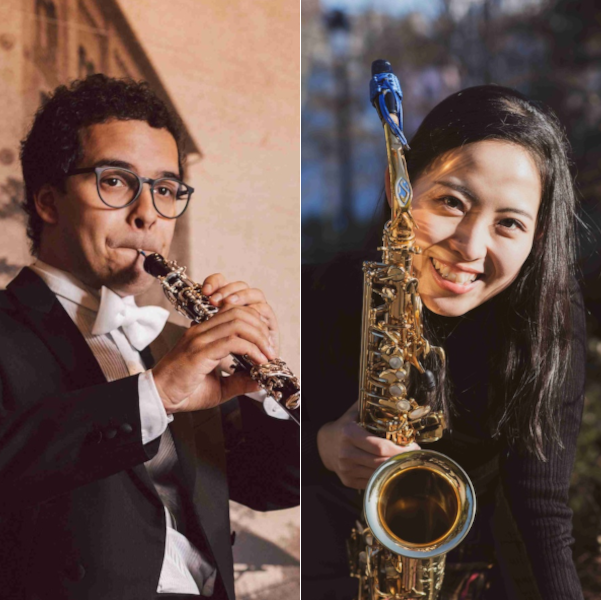 |
ConcertMetamorphoses
Mixed music concert by Tiago Coimbra (oboe) and Miho Hakamada (saxophone) |
|
- 20 July 2021 - |
||
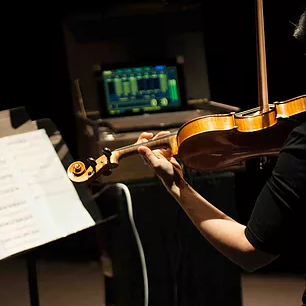 |
ConferenceAugmented instruments / Aural mirages
Conference by Alexander Mihalic |
4 May 2021
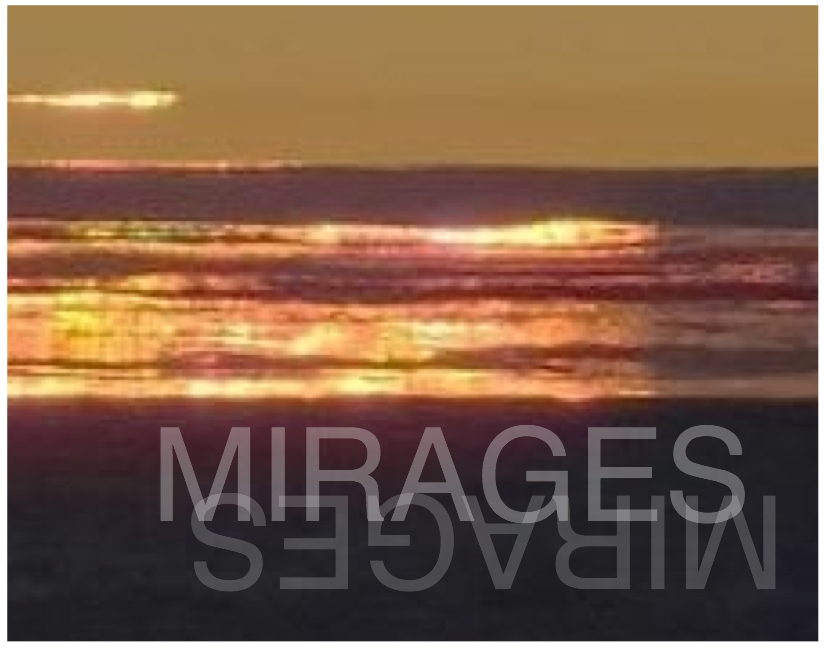 "Appearances are a glimpse of the unseen" - Anaxagoras
"Appearances are a glimpse of the unseen" - Anaxagoras
Fascinating optical phenomena, mirages have inspired various legends and are someties assimilated to hallucinations. Indeed, in a figurative sense, the word mirage also refer to illusions and deceptive appearances. And yet, what we see in a mirage actually exists...
As part of the Art & Science Days, Musinfo proposes to composers and artists from around the world to participate in a call for a sound or multimedia work on the theme "Mirages".
The exhibition Mirages collects a selection of sound and audiovisual works on the theme. Some are freely inspired, others study the phenomenon from a more scientific point of view.
4 May 2021
The human being constantly perfections his work tools in all domains. From time to time, he finds a solution so innovative, that it results in a completely new tool. Sampo whose purpose is to change sounds, is a tool dedicated to musicians of all walks. Its development began two decades ago, and due to the constant evolution of technology, it has undergone numerous changes and improvements.
Sampo is an innovative instrument of the 21st century whose purpose is to augment the sound capacities of any acoustic instrument. The exhibition brings out the evolution of this innovative instrument of the 21st century. These paradoxical “magical boxes” are a concentration of technology embedded in wooden boxes, decorated in an ancient style, all unique and hand-made by craftsmen. Items designed to be mobile work tools that will free musical creativity.
The exhibition is a tour of the evolution of Sampo since the original idea and the single prototype built in 1997 to the current manufacturing in Saint-Etienne.
This exhibition was initially realized in collaboration with the Ateliers Rue Raisin for the Off du Biennale de Design 2017. For the first time, the exhibition is available in a virtual environment.
Photographer Axelle Reboux proposes to explore different views of mirages : symbolic, abstract, emotional... All ways to see the mirage, the illusion in live. She aims to capture the mirage in different formats to better interact with different personalities.
Having studied fine arts, history of arts and corporate documentation, Axelle Reboux picks up her camera to eternalize memories, to transfigure the state of "being" of people and things surrounding her.
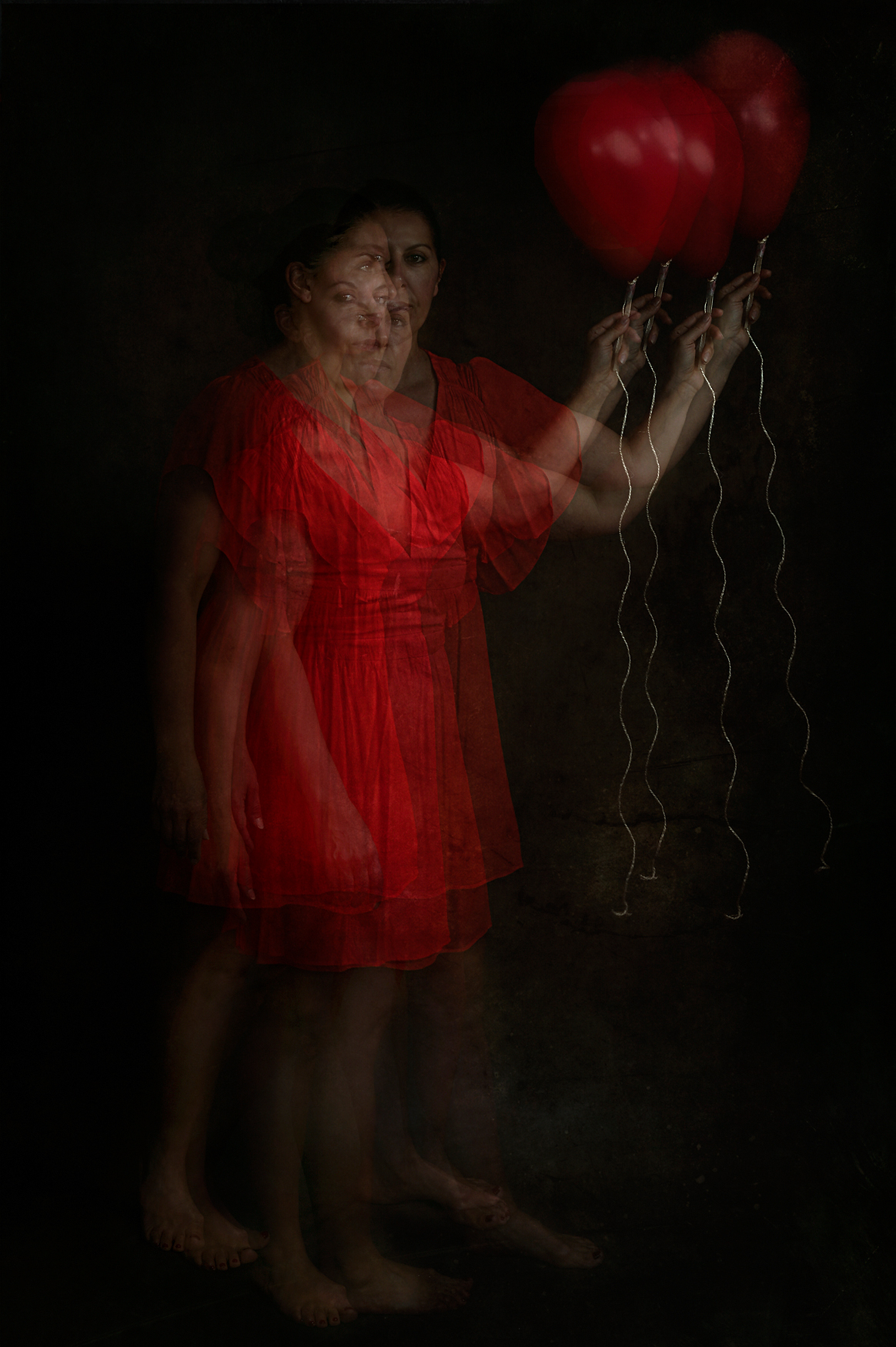
15 - 18 May 2019 - Médiathèque de Tarentaize
Extended until 25 May
Inauguration on Wednesday 15 May at 16h with a live performance: Next Level
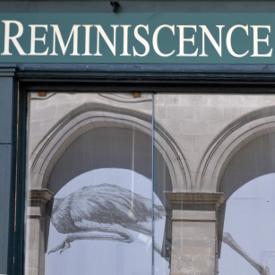 In the context of the 2019 Art & Science Days, this exhibition presents a photographic journey around the two themes of this edition: Déjà vu and Time.
In the context of the 2019 Art & Science Days, this exhibition presents a photographic journey around the two themes of this edition: Déjà vu and Time.
From photo to photo we get to follow the pathway of a look that, from echoes to reflections, is freed, seeks itself and moves forward, towards life, towards love, and all the marvels of this world, seizing the time it is given - before progressively being erased and finally disappearing, in a last tribute to the power of reminiscence and image.
Carole Chollet was born in Blois and currently lives in Nantes.
Since 2012 she has a photo and text blog Chemin des jours.
The human being constantly perfections his work tools in all domains. From time to time, he finds a solution so innovative, that it results in a completely new tool. Sampo whose purpose is to change sounds, is a tool dedicated to musicians of all walks. Its development began two decades ago, and due to the constant evolution of technology, it has undergone numerous changes and improvements.
Sampo is an innovative instrument of the 21st century whose purpose is to augment the sound capacities of any acoustic instrument. This exhibition brings out the evolution of this innovative instrument of the 21st century. These paradoxical “magical boxes” are a concentration of technology embedded in wooden boxes, decorated in an ancient style, all unique and hand-made by craftsmen. Items designed to be mobile work tools that will free musical creativity.
The exhibition is a tour of the evolution of Sampo since the original idea and the single prototype built in 1997 to the current manufacturing in Saint-Etienne.
This exhibition was initially realized in collaboration with the Ateliers Rue Raisin for the Off du Biennale de Design 2017.
Saint-Etienne – 15 / 18 May 2019
interchange, education, culture, sciences
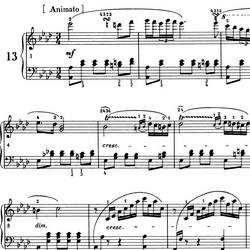 Musical conference: Polish Music
Musical conference: Polish MusicAlicja Lizer-Molitorys and Przemyslaw Scheller
15h - Médiathèque de Tarentaize
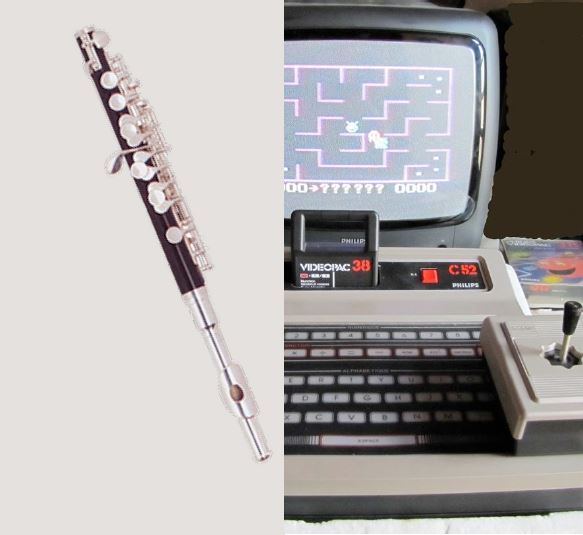
Alicja Lizer-Molitorys
16h - Médiathèque de Tarentaize
 Exhibition: Reminiscence
Exhibition: ReminiscenceMezzanine of Médiathèque de Tarentaize
During opening hours
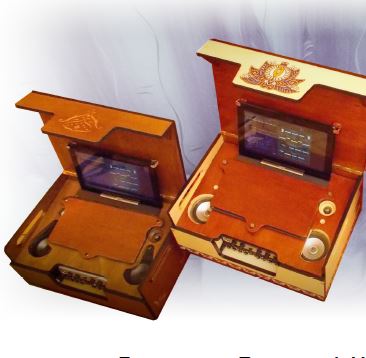
Mezzanine of Médiathèque de Tarentaize
During opening hours
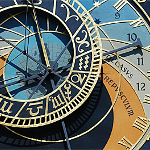
Nicolas Vincent-Morard
19h - Cinémathèque de Saint-Etienne
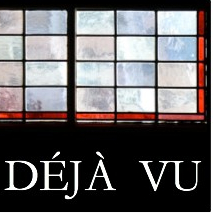
A selection of sound and multimedia works from the 2019 Call for works
20h - Cinémathèque de Saint-Etienne

Mezzanine of Médiathèque de Tarentaize
During opening hours

Mezzanine of Médiathèque de Tarentaize
During opening hours
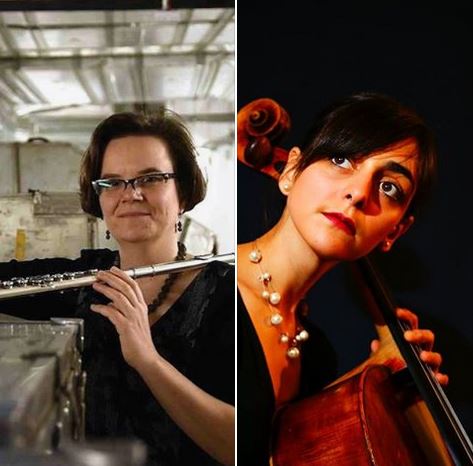 Concert: Impressions
Concert: Impressions Alicja Lizer-Molitorys (flute) and Marie Ythier (cello)
18h - Bourse du Travail

Mezzanine of Médiathèque de Tarentaize
During opening hours

Mezzanine of Médiathèque de Tarentaize
During opening hours
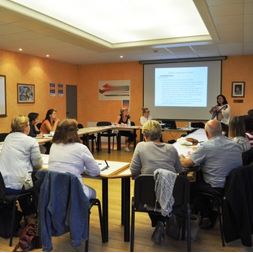 Round table: Sampo and networks
Round table: Sampo and networks Return on experience of the Artex project and debate around collaboratinons thanks to Sampo
10h30 - Médiathèque de Tarentaize
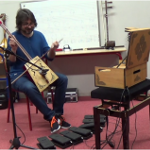 Performance and presentation: A Night Journey
Performance and presentation: A Night Journey Improvisations on traditional instruments and Sampo by Nicolas Vincent-Morard and presentation of Sampo by Alexander Mihalic
18h - Saint-Etienne Mining Museum | Deferred to Sunday 19 May at 15h

Mezzanine of Médiathèque de Tarentaize
During opening hours

Mezzanine of Médiathèque de Tarentaize
During opening hours
Administration Department
Artistic and Genéral Director
Management assistant
Head of the Bourges branch
Head of scientific sector
Head of communication sector
Head of Artistic and Pedagogical sector
 Cécilia Lemaitre Sgard studied at Lyon Conservatory in the class of N. Baldeyrou and R. Bianciotto. Holder of a DNSPM diploma and a BA in musicology, she obtained her clarinet Master’s degree with highest qualification of “very good” in 2015. Trained in orchestral music profession, Cécilia appears regularly in big musical groups such as the Lyon Opera, the National Orchestra of Lyon and the Orchestre Philharmonique de Radio-France, as well as in chamber orchestras such as the Regional Orchestra of Normandy or the Nova Ensemble. Passionate about chamber music, Cécilia is a member of the Quintette Altra, a wind quintet founded in 2013 with which she appears in large concert halls in Paris (Paris Philharmonic, Grand Salon des Invalides, ...) and as part of many festivals (Jazz sous les pommiers, Musiques d’un siècle, Musique en Périgord vert...). She is currently perfecting her skills with the Quintet in a Master of chamber music at the Paris Conservatory in the class of D. Walter. Curious and eager to enrich her artistic experience and to discover a new approach to the scene, Cecilia also participated in the founding of the AnderScènes Ensemble with which she regularly performs. This ensemble of musical theater partners with stage directors and creates live performances combining theater, literature and music.
Cécilia Lemaitre Sgard studied at Lyon Conservatory in the class of N. Baldeyrou and R. Bianciotto. Holder of a DNSPM diploma and a BA in musicology, she obtained her clarinet Master’s degree with highest qualification of “very good” in 2015. Trained in orchestral music profession, Cécilia appears regularly in big musical groups such as the Lyon Opera, the National Orchestra of Lyon and the Orchestre Philharmonique de Radio-France, as well as in chamber orchestras such as the Regional Orchestra of Normandy or the Nova Ensemble. Passionate about chamber music, Cécilia is a member of the Quintette Altra, a wind quintet founded in 2013 with which she appears in large concert halls in Paris (Paris Philharmonic, Grand Salon des Invalides, ...) and as part of many festivals (Jazz sous les pommiers, Musiques d’un siècle, Musique en Périgord vert...). She is currently perfecting her skills with the Quintet in a Master of chamber music at the Paris Conservatory in the class of D. Walter. Curious and eager to enrich her artistic experience and to discover a new approach to the scene, Cecilia also participated in the founding of the AnderScènes Ensemble with which she regularly performs. This ensemble of musical theater partners with stage directors and creates live performances combining theater, literature and music.
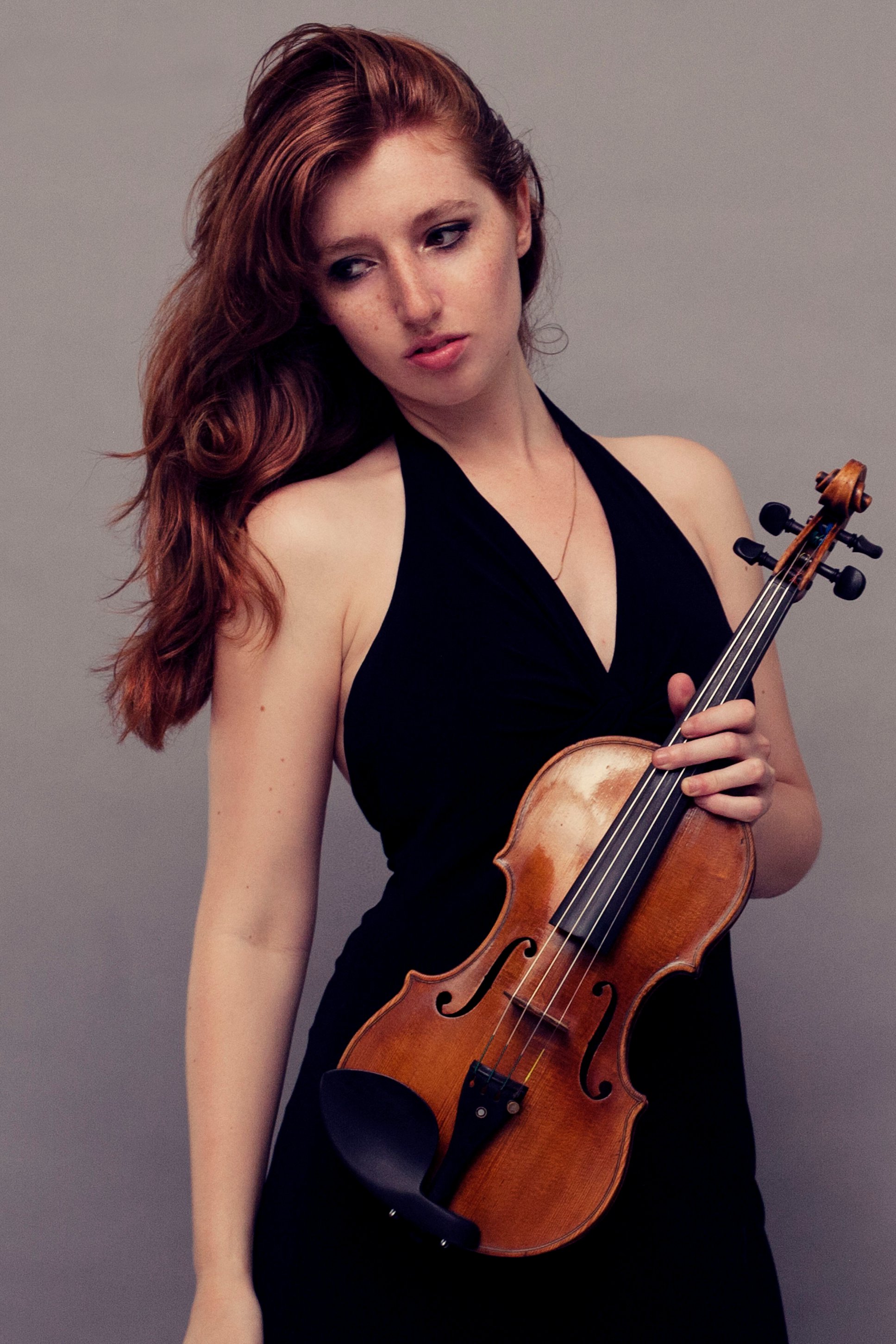 Rachel Koblyakov violinist of American origin, has performed as a soloist and chamber musician internationally through the United States, France, Switzerland and Germany. She has collaborated with various musicians and composers such as Ida Haendal, Philippe Entremont, Dejan Bogdanovich, and the Ensemble Intercontemporain. A graduate of the Juilliard School, she studied with Ronald Copes. She debuted as a soloist at the age of 12 years with the youth orchestra of Illinois, and performs regularly as a soloist with orchestras such as: the Hof Symphony, St. Dizier chamber orchestra and the New York AeonEnsemble. She has won numerous first prizes such as the Gail and Harry Adams contest, the Baroque Young Artist contest, and was in the final for the International Violin Competition in 2014. She won the scholarships Young Artists Scholarship, the Abram Shtern Scholarship Prize and the Grand Prix 2012 des Instruments à Cordes de Fontainebleau. She participated in different festivals such as the Keshet Eilon violin Mastercourse with Shlomo Mintz, the Lucerne Festival (Switzerland), the Academy of Fontainebleau, and the international festival of Bowdoin. A specialist in contemporary music, she has closely collaborated with many composers such as Wolfgang Rihm, Matthias Pintscher, and Stuart Smith. Many composers such as Stuart Smith, Jules Matton, Yuri Boguinia, and Thomas Menuet have dedicated to her and entrusted her the premieres of their pieces. During the summer 2014 and 2015 she performed at the Lucerne Festival in the Contemporary Ensemble under the direction of Matthias Pintscher and Sir Simon Rattle. She currently lives in Paris, where she studies at the Paris Conservatory and follows the Artist Diploma curriculum.
Rachel Koblyakov violinist of American origin, has performed as a soloist and chamber musician internationally through the United States, France, Switzerland and Germany. She has collaborated with various musicians and composers such as Ida Haendal, Philippe Entremont, Dejan Bogdanovich, and the Ensemble Intercontemporain. A graduate of the Juilliard School, she studied with Ronald Copes. She debuted as a soloist at the age of 12 years with the youth orchestra of Illinois, and performs regularly as a soloist with orchestras such as: the Hof Symphony, St. Dizier chamber orchestra and the New York AeonEnsemble. She has won numerous first prizes such as the Gail and Harry Adams contest, the Baroque Young Artist contest, and was in the final for the International Violin Competition in 2014. She won the scholarships Young Artists Scholarship, the Abram Shtern Scholarship Prize and the Grand Prix 2012 des Instruments à Cordes de Fontainebleau. She participated in different festivals such as the Keshet Eilon violin Mastercourse with Shlomo Mintz, the Lucerne Festival (Switzerland), the Academy of Fontainebleau, and the international festival of Bowdoin. A specialist in contemporary music, she has closely collaborated with many composers such as Wolfgang Rihm, Matthias Pintscher, and Stuart Smith. Many composers such as Stuart Smith, Jules Matton, Yuri Boguinia, and Thomas Menuet have dedicated to her and entrusted her the premieres of their pieces. During the summer 2014 and 2015 she performed at the Lucerne Festival in the Contemporary Ensemble under the direction of Matthias Pintscher and Sir Simon Rattle. She currently lives in Paris, where she studies at the Paris Conservatory and follows the Artist Diploma curriculum.
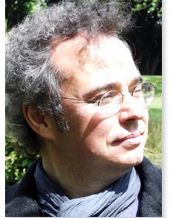 After his studies at the Conservatory of Saint-Maur with Catherine Collard, Ludovic Frochot is awarded the first prize and first nomination in piano and in chamber music in 1995, in Pierre Pontier’s class at Conservatoire National Supérieur de Musique de Lyon. In 1996 he is accepted in Menahem Pressler’s (from the Beaux-Arts Trio) advanced class at Indiana University (USA) where he is awarded the prestigious Artist Diploma in 1996. In parallel, he gets chamber music classes from Gyorgy Sebok and Rotislav Dubinsky (from Quatuor Borodine), and lied classes from Leonard Hokanson. Invited by the New York City Opera in August 1999, he then works as choir master at Indiana University, then at CNSM in Lyon from 2000 to 2002. Ludovic Frochot frequently performs as soloist (he is semi-finalist of R. Schuman competition), in chamber music, namely in the Trio AMEDEO (formerly Trio NOVALIS) – semi-finalist of the Munich International Contest and laureate of the Pro Quartet Foundation, and as accompanist for a vocal repertoire. An engaged pedagogue, he is invited by the Cité de la Musique in Paris to collaborate on the new edition of works dedicated to chamber music. Holding a CA diploma in piano, he teaches at the regional conservatory of Nantes. In parallel, he teaches at Pôle d'Enseignement Supérieur Bretagne/Pays de Loire since September 2011.
After his studies at the Conservatory of Saint-Maur with Catherine Collard, Ludovic Frochot is awarded the first prize and first nomination in piano and in chamber music in 1995, in Pierre Pontier’s class at Conservatoire National Supérieur de Musique de Lyon. In 1996 he is accepted in Menahem Pressler’s (from the Beaux-Arts Trio) advanced class at Indiana University (USA) where he is awarded the prestigious Artist Diploma in 1996. In parallel, he gets chamber music classes from Gyorgy Sebok and Rotislav Dubinsky (from Quatuor Borodine), and lied classes from Leonard Hokanson. Invited by the New York City Opera in August 1999, he then works as choir master at Indiana University, then at CNSM in Lyon from 2000 to 2002. Ludovic Frochot frequently performs as soloist (he is semi-finalist of R. Schuman competition), in chamber music, namely in the Trio AMEDEO (formerly Trio NOVALIS) – semi-finalist of the Munich International Contest and laureate of the Pro Quartet Foundation, and as accompanist for a vocal repertoire. An engaged pedagogue, he is invited by the Cité de la Musique in Paris to collaborate on the new edition of works dedicated to chamber music. Holding a CA diploma in piano, he teaches at the regional conservatory of Nantes. In parallel, he teaches at Pôle d'Enseignement Supérieur Bretagne/Pays de Loire since September 2011.
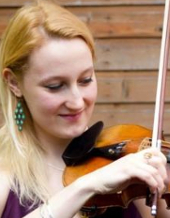 Emma is a violinist and violist specialising in the performance of experimental contemporary music and improvisation. She performs as a soloist and in small ensembles, working often with live electronics, and collaborating regularly with composers. In addition to the modern set-up, she plays a baroque violin and performs both baroque and contemporary music written specifically for this instrument.
Emma is a violinist and violist specialising in the performance of experimental contemporary music and improvisation. She performs as a soloist and in small ensembles, working often with live electronics, and collaborating regularly with composers. In addition to the modern set-up, she plays a baroque violin and performs both baroque and contemporary music written specifically for this instrument.
As an improviser, Emma's performance tends to be quiet and intimate in nature, exploring the innate timbral qualities of the violin, and discovering some of the often hidden sounds that can be found with her unique combination of technique and tools.
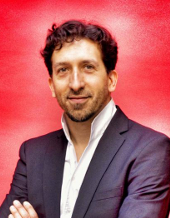 To say he comes from Madrid would be ignoring his wandering soul: six years in Hungary, then long stays, studies in Paris, Strasbourg, Rome (at the Accademia Nazionale de Santa Cecilia)... He’s from here, he’s from elsewhere, speaking easily at least half a dozen languages.
To say he comes from Madrid would be ignoring his wandering soul: six years in Hungary, then long stays, studies in Paris, Strasbourg, Rome (at the Accademia Nazionale de Santa Cecilia)... He’s from here, he’s from elsewhere, speaking easily at least half a dozen languages.
But that’s not all. Ivan Solano is a clarinetist and a composer. Let’s consider the two “completely, tenderly, tragically” – like Paul Javal’s love in Contempt.Without concessions, he wants to push his standards of form and detail all the way. And yet these activities require very different qualities and mental structures.
However, this music, science and literature lover enjoys passing from one side of the brain to the other. He has thus gained a truly surprising flexibility.
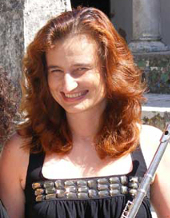 Monika Streitová, The flutist, researcher of INET- MD and Assistant Professor of the University of Évora. She graduated from the Music and Performing Arts Academy of the Bratislava University, Slovakia, where she also completed her PhD at Contemporary Music Performance in 2005. (Thesis about the Sublimation in Music "Ad Libidum".) Her current research interests are concentrated in search and application of contemporary flute techniques that may contribute to the creative development of sonority. In 2006 her CD "Luminiscence" obtained the highest award from musical critic from Czech Radio.
Monika Streitová, The flutist, researcher of INET- MD and Assistant Professor of the University of Évora. She graduated from the Music and Performing Arts Academy of the Bratislava University, Slovakia, where she also completed her PhD at Contemporary Music Performance in 2005. (Thesis about the Sublimation in Music "Ad Libidum".) Her current research interests are concentrated in search and application of contemporary flute techniques that may contribute to the creative development of sonority. In 2006 her CD "Luminiscence" obtained the highest award from musical critic from Czech Radio.
In 2007 she received a scholarship from FCT (Foundation for Science and Technology Lisbon) to realize her postdoctoral project at the Aveiro University, Portugal. During her research she has been cooperating with contemporary composers, namely R. Berger, J. Y. Bosseur, D. MacMouline, B. Schaffer, J. Guillou e J. P. Oliveira, and has premiered several of their works in most prestigious international contemporary music festivals.
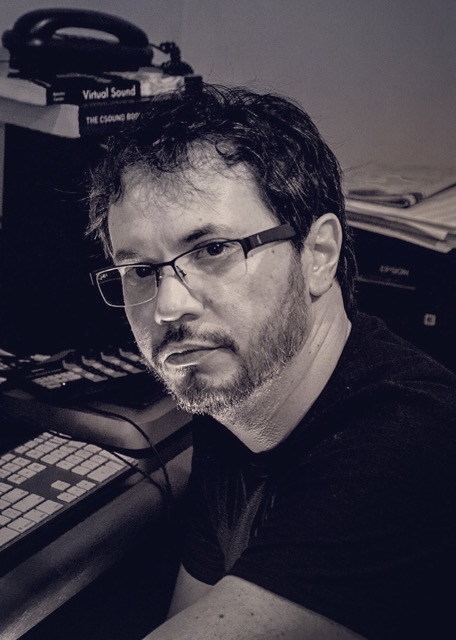 Marcelo is a composer and professor of music at Rio de Janeiro State Federal University (UNIRIO), teaching mostly electroacoustic music composition, music technology, and history of electroacoustic music. He has been working with electroacoustic music (major composing activity), audiovisual composition (vídeomúsica), dance music, and also chamber music. His works have been presented in Brazil, Argentina, Italy, Chile, Ireland, South Korea, Germany, Lithuania. Some of his works were recorded on CDs. He won the 1st Villa-Lobos composers competition (2008), received an Honorable mention at Almeida Prado Prize (2004), was a finalist of IBEU Contest (2007) and has been selected for many festivals in Brazil and around the world. As a researcher, his majors subjects are the hybridization possibilities in the field of electroacoustic music composition and electronica, and electroacoustic music and video, focusing not only on the technical aspects, but mostly on the sociopolitical and ideological aspects of those fields of production and the social commitments of the composer today. He has been working with the composer Jocy de Oliveira since 2010 as part of the Ensemble Jocy de Oliveira. His job is to prepare the electronics and make all the sound diffusion of her operas. As a guitar player he worked with Brazilian Guitar Orchestra, conducted by Aloysio Neves, and many other chamber and jazz groups. He also worked for 5 years composing for the Sylvio Dufrayer’s dance company, presenting works all over the world (Italy, Argentina, Germany, Lithuania). He has coordinated the last three editions of the electroacoustic concerts at Bienal Brasileira de Música Contemporânea, and the 2015 edition of the Festival Compositores de Hoje.
Marcelo is a composer and professor of music at Rio de Janeiro State Federal University (UNIRIO), teaching mostly electroacoustic music composition, music technology, and history of electroacoustic music. He has been working with electroacoustic music (major composing activity), audiovisual composition (vídeomúsica), dance music, and also chamber music. His works have been presented in Brazil, Argentina, Italy, Chile, Ireland, South Korea, Germany, Lithuania. Some of his works were recorded on CDs. He won the 1st Villa-Lobos composers competition (2008), received an Honorable mention at Almeida Prado Prize (2004), was a finalist of IBEU Contest (2007) and has been selected for many festivals in Brazil and around the world. As a researcher, his majors subjects are the hybridization possibilities in the field of electroacoustic music composition and electronica, and electroacoustic music and video, focusing not only on the technical aspects, but mostly on the sociopolitical and ideological aspects of those fields of production and the social commitments of the composer today. He has been working with the composer Jocy de Oliveira since 2010 as part of the Ensemble Jocy de Oliveira. His job is to prepare the electronics and make all the sound diffusion of her operas. As a guitar player he worked with Brazilian Guitar Orchestra, conducted by Aloysio Neves, and many other chamber and jazz groups. He also worked for 5 years composing for the Sylvio Dufrayer’s dance company, presenting works all over the world (Italy, Argentina, Germany, Lithuania). He has coordinated the last three editions of the electroacoustic concerts at Bienal Brasileira de Música Contemporânea, and the 2015 edition of the Festival Compositores de Hoje.
The title is ironic. The composition of this piece implied the continuous change of screen pages in my computer: from the score editor application to the software developed by Alexander Mihalic for Sampo. The shortcut to change from one software to the other are the keys ALT-TAB pressed together. Well, I should have chosen it as its title, but decided for the short version ALT. ALT is a violin “duo”, a dialogue, sometimes an oppressive one, from the real violinist and the electronic one. The political situation in Brazil since the end of 2015’s elections really divided the country in two political-ideological fields: as always, the right and the left ones; or those who wanted for president Dilma resignation, and those who fought to defend her. Dilma, as we all know, was recently removed from office to have the impeachment trial judged by Brazil’s supreme court. Beside the fact (the real and important one) that there are more than two poles in this matter, those two groups illustrate the differences - not only of the political and social interests in Brazil - of Brazilians’ social, cultural, and values divisions. We are all Brazilians (the violin “duo”), but we are not the same. The musical structure deals with those political ideas: it is based on a mix and pre-compositional transformation of Maracatu and Coco rhythms, on a group of harmonic related chords, and sort of delays and echoes that violently replicate and disturb each others parts. Improvisation and determination are in a continuous dialectic relation: sometimes what is determined can be accessed, created, or subverted by the violinist. Precision and inaccuracies altogether. The violinist is imprisoned by the score, but she can subvert it if she wants or needs to.
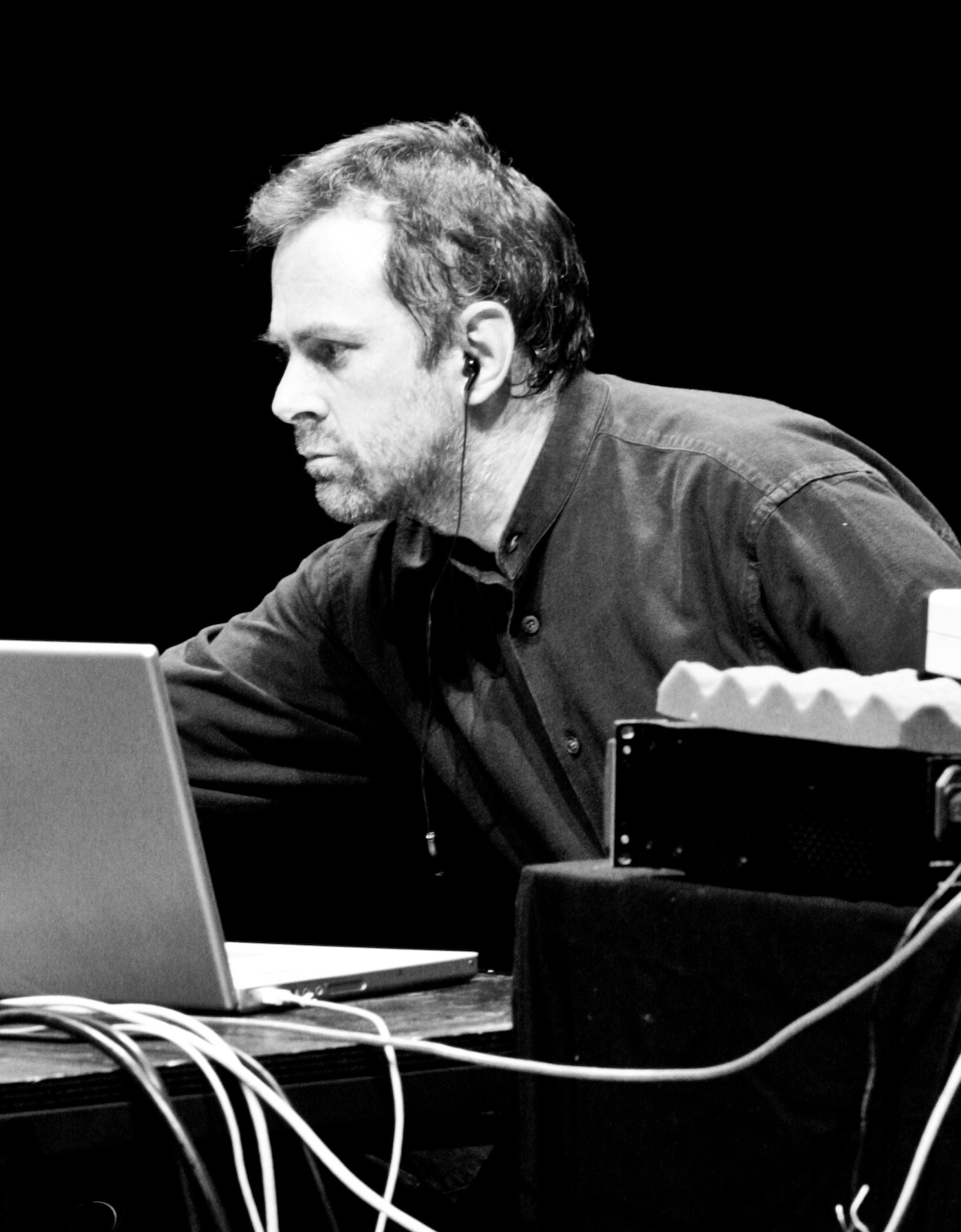 Fabio Cifariello Ciardi (1960) is a composer using sound and technology to mine real-word phenomena. His most recent interests are in sonification and instrumental transcription of speaking-voice rhythms and inflections. He studied composition, electronic music and musicology at Rome Conservatory of Music and Bologna University. He also studied with Tristan Murail, Philippe Manoury (IRCAM) and Franco Donatoni (Accademia S.Cecilia). In 1991 he won the selection for the “Cursus d’Informatique Musicale at IRCAM”. In 1995 he has been invited at EMS (Stockholm) as composer in residence. His compositions have been awarded prizes at various international competitions: "Ennio Porrino 1989" (Cagliari), "L. Russolo 1992" (Varese), "MusicaNova 1993" (Praha - Czech), "ICMC Cd selection 1993" (Tokyo - Japan), "Olympia 1993" (Athens - Greek), "Spectri Sonori93" (Tulane - USA), XXV Concours Int. de Musique Electroacoustique 1998 (Bourges - France), Valentino Bucchi 1999 (Roma - Italy), Premio Nuova Musica - 39° Concorso Internazionale di Canto Corale C.A.Seghizzi (Gorizia - Italy), "VideoEvento d'Arte 2000" (Torino - Italy), HK.5 Rimusicazioni Film Festival 2003 (Bolzano - Italy), AITS “Best sound in Italian motion pictures 2011” (Rome, Italy). His music is published and recorded by Raitrade, Curci, ICMA, CNI-LaFrontiera, Unesco CIME-Cultures Electroniques (Bourges, France), Mudima - Cramps Records, SiltaClassic, Edipan. His works have been commissioned by Biennale di Venezia, Fondazione ITeatri di Reggio Emilia, Ravena Festival, Fondazione Palazzo Strozzi Firenze, Agon-Centro Armando Gentilicci, Fondazione S.Cecilia di Portogruaro, Comune di Trento, Orchestra Haydn di Trento e Bolzano, Orchestra Sinfonica di Sanremo, Orchestra MilanoClassica, Orchestra di Roma e del Lazio, Divertimento Ensemble - Ernst von Siemens Music Foundation, Instituts für Neue Musik di Friburgo, Singapore University, Stockholm Electronic Music Studio, IMEB Bourges, Halle 14 Leipzig & ACC Gallery Weimar, Exnovo Ensemble. He has developed software algorithms for dissonance calculation, sound spatialization, financial data sonification, speaking-voice musical transcription and other computer-aided composition tools. Cifariello Ciardi collaborated with the Department of Psychology and Architecture of “La Sapienza” University in Rome, the Research Institute for Music Theatre (Rome), the Italian radio RAI-Radio3 publishing several works dedicated to the analysis, the psychology and the policy of music. Cifariello Ciardi teaches composition at Trento Conservatory (www.conservatorio.tn.it) and he is one of the founding members of Edison Studio (www.edisonstudio.it).
Fabio Cifariello Ciardi (1960) is a composer using sound and technology to mine real-word phenomena. His most recent interests are in sonification and instrumental transcription of speaking-voice rhythms and inflections. He studied composition, electronic music and musicology at Rome Conservatory of Music and Bologna University. He also studied with Tristan Murail, Philippe Manoury (IRCAM) and Franco Donatoni (Accademia S.Cecilia). In 1991 he won the selection for the “Cursus d’Informatique Musicale at IRCAM”. In 1995 he has been invited at EMS (Stockholm) as composer in residence. His compositions have been awarded prizes at various international competitions: "Ennio Porrino 1989" (Cagliari), "L. Russolo 1992" (Varese), "MusicaNova 1993" (Praha - Czech), "ICMC Cd selection 1993" (Tokyo - Japan), "Olympia 1993" (Athens - Greek), "Spectri Sonori93" (Tulane - USA), XXV Concours Int. de Musique Electroacoustique 1998 (Bourges - France), Valentino Bucchi 1999 (Roma - Italy), Premio Nuova Musica - 39° Concorso Internazionale di Canto Corale C.A.Seghizzi (Gorizia - Italy), "VideoEvento d'Arte 2000" (Torino - Italy), HK.5 Rimusicazioni Film Festival 2003 (Bolzano - Italy), AITS “Best sound in Italian motion pictures 2011” (Rome, Italy). His music is published and recorded by Raitrade, Curci, ICMA, CNI-LaFrontiera, Unesco CIME-Cultures Electroniques (Bourges, France), Mudima - Cramps Records, SiltaClassic, Edipan. His works have been commissioned by Biennale di Venezia, Fondazione ITeatri di Reggio Emilia, Ravena Festival, Fondazione Palazzo Strozzi Firenze, Agon-Centro Armando Gentilicci, Fondazione S.Cecilia di Portogruaro, Comune di Trento, Orchestra Haydn di Trento e Bolzano, Orchestra Sinfonica di Sanremo, Orchestra MilanoClassica, Orchestra di Roma e del Lazio, Divertimento Ensemble - Ernst von Siemens Music Foundation, Instituts für Neue Musik di Friburgo, Singapore University, Stockholm Electronic Music Studio, IMEB Bourges, Halle 14 Leipzig & ACC Gallery Weimar, Exnovo Ensemble. He has developed software algorithms for dissonance calculation, sound spatialization, financial data sonification, speaking-voice musical transcription and other computer-aided composition tools. Cifariello Ciardi collaborated with the Department of Psychology and Architecture of “La Sapienza” University in Rome, the Research Institute for Music Theatre (Rome), the Italian radio RAI-Radio3 publishing several works dedicated to the analysis, the psychology and the policy of music. Cifariello Ciardi teaches composition at Trento Conservatory (www.conservatorio.tn.it) and he is one of the founding members of Edison Studio (www.edisonstudio.it).
When I wrote Finzioni I was interested in the blurry edges of our shared sonic memories. I tried to shape my compositional tools as to control cognitive dissonances, dialectic oppositions, interpolations among different (shared?) memory traces of melodies, rhythms and timbres. Within this framework, I extracted semantic and acoustic ‘genetic codes’ from violin timbres and from well known excerpts of the violin repertoire: the first theme from the "Danse macabre" by Camille Saint-Saëns; the first theme from “L'Apprenti sorcier” by Paul Dukas; the first theme of the third movement of Brahms violin Concerto; the first theme of the third movement of Brahms violin Sonata in D minor; and "The man I love" by George Gershwin. "Finzioni" is the Italian title of “Ficciones”, the most popular anthology of Jorge Luis Borges's short stories. Similarly with the main character of one of Finzioni stories, “Las ruinas circulares”, the sonic universe of the piece is dreamed of, created and explored by the soloist, which finally passes, like Alice, “Through the Looking-Glass”. Finzioni has been realized and premiered at IRCAM between 1991 and 1992, and has been awarded at Concorso Internazionale "L. Russolo" (Varese) 1992, "Musica Nova" International Competition (Praha) 1993 and Tokyo ICMC CD Selection 1993. Finzioni has been conceived as the first piece of “Giochi e Finzioni” a suite for string quartet, contrabass and electronics (Finzioni for violin and electronics, Games, for contrabass and electronics, Pa(e/s)saggi for viola, and electronics, a piece for string quartet and electronics which is still to be written). A short version of the suite, “Giochi e passaggi”, based on a new version of Games and Pa(e/s)saggi, has been premiered at Venice Biennale 2015 .
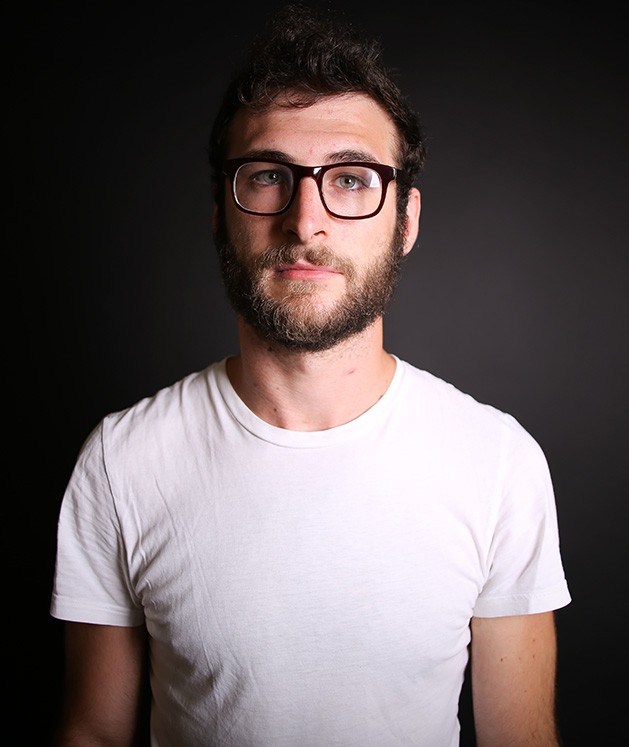 Samuel Hertz, composer and performer, received his MFA at Mills College, where he studied composition and electronic music with Pauline Oliveros, Fred Frith, and Zeena Parkins. He continually collaborates with numerous dance companies and performers throughout the United States, and his work has been seen/heard at ACUD MACHT NEU (Berlin, Germany), Bains::Connective (Brussels, Belgium), Apiary Studios (London, UK), Center for New Music (San Francisco, CA), Berkeley Art Museum (Berkeley, CA), Gray Area Foundation for the Arts (San Francisco, CA), ACRE-TV (Chicago, IL), Jack Straw New Media Gallery (Seattle, WA), Harvestworks (New York, NY), The Uncreativity Festival (Minneapolis, MN), and WBEZ Radio (Chicago, IL), among others. Samuel has worked as lead technical assistant to, and performed with Morton Subotnick, Alvin Curran, and John Driscoll. He will be in residence at Elektronmusik Studion in Stockholm, Sweden in late June. Samuel is currently part of two working groups as an artist-researcher for the Anthropocene Curriculum in association with Haus der Kulturen der Welt/Max Planck Institute for the History of Science (Berlin, Germany), and his work is released on the Nebularosa record label (London, UK).
Samuel Hertz, composer and performer, received his MFA at Mills College, where he studied composition and electronic music with Pauline Oliveros, Fred Frith, and Zeena Parkins. He continually collaborates with numerous dance companies and performers throughout the United States, and his work has been seen/heard at ACUD MACHT NEU (Berlin, Germany), Bains::Connective (Brussels, Belgium), Apiary Studios (London, UK), Center for New Music (San Francisco, CA), Berkeley Art Museum (Berkeley, CA), Gray Area Foundation for the Arts (San Francisco, CA), ACRE-TV (Chicago, IL), Jack Straw New Media Gallery (Seattle, WA), Harvestworks (New York, NY), The Uncreativity Festival (Minneapolis, MN), and WBEZ Radio (Chicago, IL), among others. Samuel has worked as lead technical assistant to, and performed with Morton Subotnick, Alvin Curran, and John Driscoll. He will be in residence at Elektronmusik Studion in Stockholm, Sweden in late June. Samuel is currently part of two working groups as an artist-researcher for the Anthropocene Curriculum in association with Haus der Kulturen der Welt/Max Planck Institute for the History of Science (Berlin, Germany), and his work is released on the Nebularosa record label (London, UK).
Mount Vision Variations, for solo clarinet and Sampo, is a non-linear set of variations on a theme. As both a mountain-top panoramic view of the northern California coastline, and a Federal Aviation Administration radar site, Mount Vision itself is a stand-in for two types of visioning: ocular, and sonic. Mount Vision Variations S, therefore, takes the idea of 'visioning' as the reading of a space -- calling its theme out into the dark in order to hear an echo that illuminates space. In this meeting point of mechanical and human sensing apparatuses, we may hear events out of order, correlate unrelated events, or fuse them together entirely. What remains is a confused trace, a series of echoes reflecting a source which may have never existed in the first place.
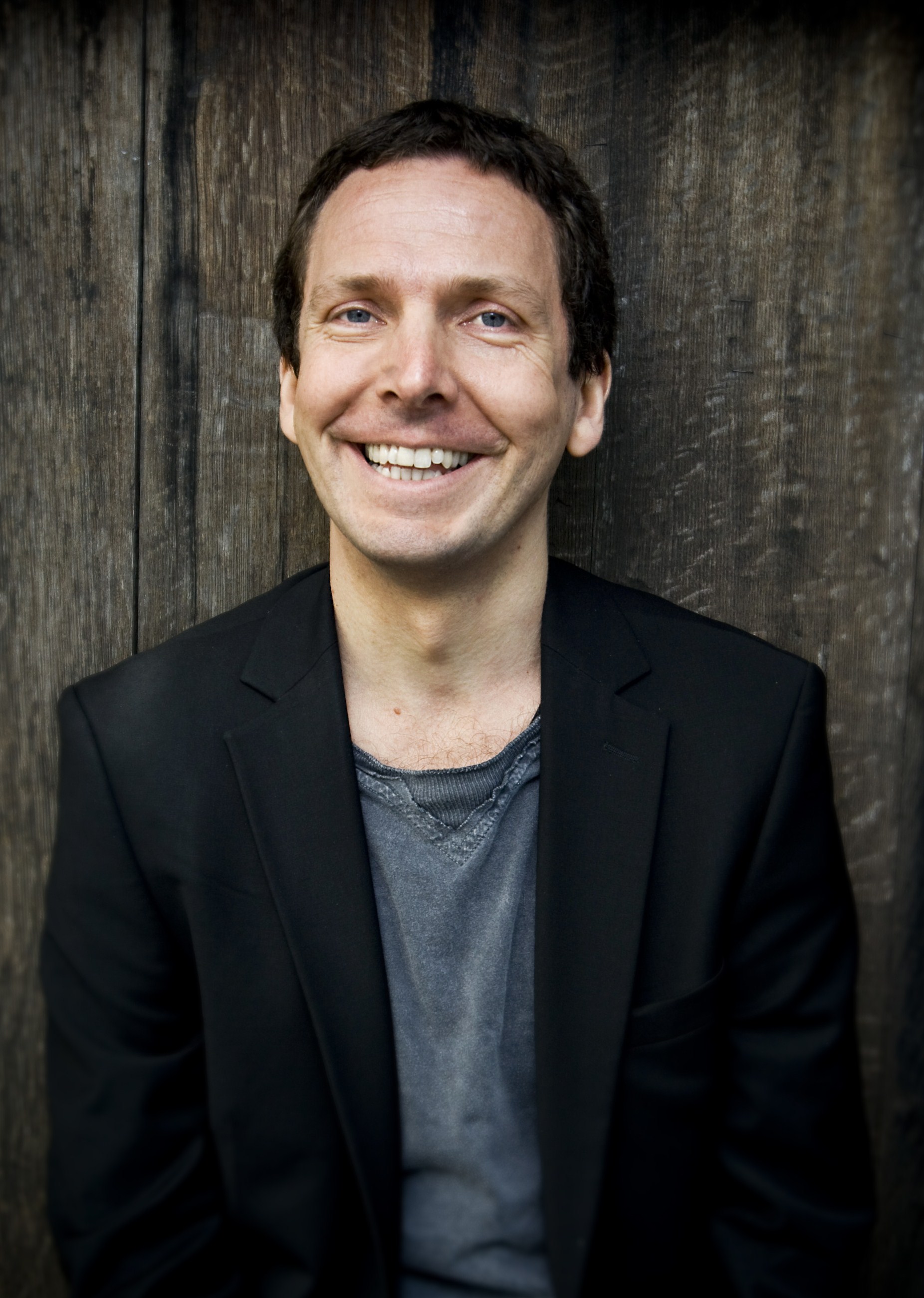 The music of Jesper Nordin, with its powerful emotional impact and traces of traditional Swedish folk music, rock music and improvised music, is broadcast and performed throughout the world by major soloists, ensembles and symphony orchestras, for instance BBC Scottish Symphony Orchestra, Basel Symphony Orchestra, both the Finnish and Swedish Radio Symphony Orchestras, Ensemble Orchestral Contemporain and Ensemble Itinéraire. He has worked with conductors like Daniel Harding, Kent Nagano and François Xavier-Roth and has received commissions from institutions like IRCAM and GRAME as well as radio stations around the world. He has also had huge success with his iOS apps Gestrument and ScaleGen that are based on his own composition technique. They are used worldwide to create music in genres ranging from Electronica and Techno to Jazz impro and Contemporary classical music.
The music of Jesper Nordin, with its powerful emotional impact and traces of traditional Swedish folk music, rock music and improvised music, is broadcast and performed throughout the world by major soloists, ensembles and symphony orchestras, for instance BBC Scottish Symphony Orchestra, Basel Symphony Orchestra, both the Finnish and Swedish Radio Symphony Orchestras, Ensemble Orchestral Contemporain and Ensemble Itinéraire. He has worked with conductors like Daniel Harding, Kent Nagano and François Xavier-Roth and has received commissions from institutions like IRCAM and GRAME as well as radio stations around the world. He has also had huge success with his iOS apps Gestrument and ScaleGen that are based on his own composition technique. They are used worldwide to create music in genres ranging from Electronica and Techno to Jazz impro and Contemporary classical music.
We often hear that in the aftermath of an explosion or a similar extreme shock, there reigns a strange silence: a sort of inner, timeless silence that drowns out the outer tumult. The title "calm like a bomb" calls to mind that type of contradictory phenomenon. And in the sensual central part of this work time does indeed seem to stand still. Jesper Nordin borrowed the title from a track by the group "Rage against the machine". It was written for violin and tape, the tape part consisting of arrangements of improvisations and variations on a lullaby. Here, Nordin has edited material from the folk/rock musician Fredrik Lindqvist, violinist Daniel Frankel and the folk singer Sofia Karlsson, whose voice and vocal technique play an important role in defining the character of the music. As the music passes into the final section, it does so through the emergence of a kind of tick-tock, mechanical music, and with this slightly limping march of alternating meters and accents, calm like a bomb ends in something reminiscent of a more "urban" sound milieu. For Nordin himself, "calm like a bomb" was a seminal work on the route towards an individual idiom. The piece has been played at a number of international festivals and has been awarded several prizes.
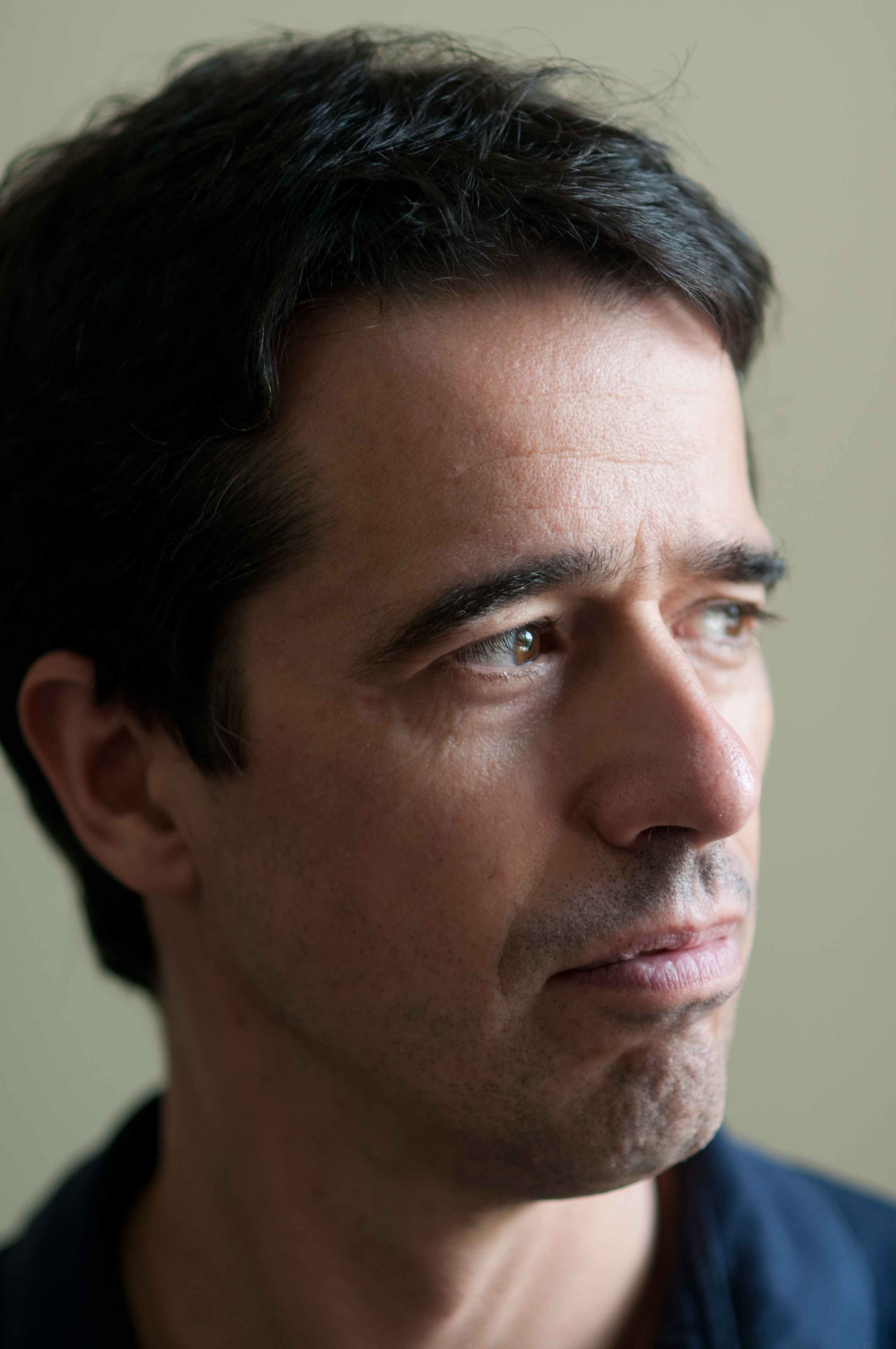 João Pedro Oliveira (born 1959) studied organ, composition and architecture in Lisbon. Ph.D. in music (composition) at the University of New York at Stony Brook. His works include a chamber opera, a Requiem, several orchestral works, three string quartets, chamber music, music for solo instrument, electroacoustic music and experimental video. A recipient of numerous national and international awards, including three awards at the Electroacoustic Music Competition in Bourges, and the prestigious Magisterium in the same competition, the Giga-Hertz Award, the first prize in Metamorphoses, the 1st Prize in the Musica Nova Competition, etc .. his music is played all over the world, and most of his works were commissioned by prestigious international institutions. He is a full professor at the Federal University of Minas Gerais (Brazil) and professor at the University of Aveiro (Portugal). He has also published several articles in national and international journals, and has written a book on the analytic theory of twentieth century music.
João Pedro Oliveira (born 1959) studied organ, composition and architecture in Lisbon. Ph.D. in music (composition) at the University of New York at Stony Brook. His works include a chamber opera, a Requiem, several orchestral works, three string quartets, chamber music, music for solo instrument, electroacoustic music and experimental video. A recipient of numerous national and international awards, including three awards at the Electroacoustic Music Competition in Bourges, and the prestigious Magisterium in the same competition, the Giga-Hertz Award, the first prize in Metamorphoses, the 1st Prize in the Musica Nova Competition, etc .. his music is played all over the world, and most of his works were commissioned by prestigious international institutions. He is a full professor at the Federal University of Minas Gerais (Brazil) and professor at the University of Aveiro (Portugal). He has also published several articles in national and international journals, and has written a book on the analytic theory of twentieth century music.
Time Spell uses transformed repetition as its construction material. The structure is very close to a ritornello where the repeated moments are masked or transformed to create the illusion of a constant development. The inspiration for this idea comes from a story where a man is condemned to live the same day repeated until the end of his life, and he must invent new ways to overcome this repetition and find something new.
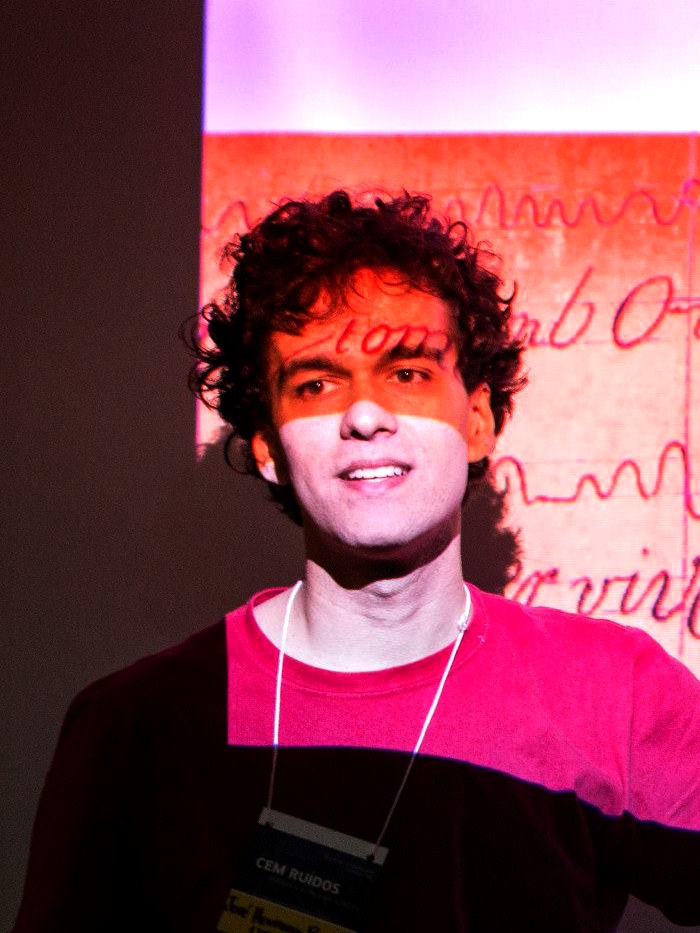 José Henrique Padovani was born in São Paulo (Brazil) in 1981 and raised in Belo Horizonte, where he had his basic musical training and completed his undergraduate course in composition. Between 2007 and 2013, Padovani continued his graduate studies at the Arts Institute of the State University of Campinas (UNICAMP). Padovani holds a Doctor of Music degree from UNICAMP, where he now is Professor of Composition, Analysis, Orchestration and Computer Music. Between 2012 and 2016 he teached at the Federal University of Paraíba. Padovani’s pieces have been played by musicians and ensembles such as The Arditti Quartet (UK), the Minas Gerais Philharmonic Orchestra (BR), Ostravská Banda (CZ), the Symphonic Orchestra of the Hamburg Music School (GER), L'Arsenale (IT), the Symphonic Orchestra of the State University of Campinas (BR), the Symphonic Orchestra of the Federal University of Paraíba (BR), and others. In 2010, he was awarded with 1st Prize Camargo Guarnieri for his piece Impedance, for flute and ensemble. In 2011 he won the 4th European Competition for Live-Electronic Music Projects, with the piece A viagem e o rio, for 17 instruments, live-electronics and video. In 2015, Padovani was awarded with the Bourges' 2nd International Composition Contest for Acoustic Instrument and electroacoustic device, with the piece Un segno nello spazio, for clarinet and live-electronics.
José Henrique Padovani was born in São Paulo (Brazil) in 1981 and raised in Belo Horizonte, where he had his basic musical training and completed his undergraduate course in composition. Between 2007 and 2013, Padovani continued his graduate studies at the Arts Institute of the State University of Campinas (UNICAMP). Padovani holds a Doctor of Music degree from UNICAMP, where he now is Professor of Composition, Analysis, Orchestration and Computer Music. Between 2012 and 2016 he teached at the Federal University of Paraíba. Padovani’s pieces have been played by musicians and ensembles such as The Arditti Quartet (UK), the Minas Gerais Philharmonic Orchestra (BR), Ostravská Banda (CZ), the Symphonic Orchestra of the Hamburg Music School (GER), L'Arsenale (IT), the Symphonic Orchestra of the State University of Campinas (BR), the Symphonic Orchestra of the Federal University of Paraíba (BR), and others. In 2010, he was awarded with 1st Prize Camargo Guarnieri for his piece Impedance, for flute and ensemble. In 2011 he won the 4th European Competition for Live-Electronic Music Projects, with the piece A viagem e o rio, for 17 instruments, live-electronics and video. In 2015, Padovani was awarded with the Bourges' 2nd International Composition Contest for Acoustic Instrument and electroacoustic device, with the piece Un segno nello spazio, for clarinet and live-electronics.
Viela, for violin and Sampo, explores the integration of the violin and the Sampo to extend and double the acoustic instrument's sounds and gestures. The electronics is thought as if the acoustic instrument was followed by other virtual bowed strings, such as violas and cellos. In Portuguese, "viela" means both "alley" and "vielle" (an ancient string instrument). The title alludes to the narrow difference between the violin and the electronics pitches and onsets, to the conception of the live-electronics as an instrumental extension of the violin, to the open strings based harmony, and to the cyclical patterns that characterize both the instrumental gestures and the audio processing effects.
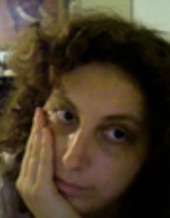 Maria Alvarez began her piano studies at the age of 9 years old with Amparo Fuster. She studied harmony and counterpoint with Mercedes Zabala, Gabriel Fernandez Alvez and Juan Carlos Panadero at the Conservatory in Madrid. She studied as well piano accompaniment with Sebastian Mariné. She received lessons from the pianist Eva Alcazar, Claudio Martinez Mehner and Patricia Montero. Having always been interested in music composition, she completed her studies in music theory, harmony, counterpoint and fugue at the Flemish Conservatory in Brussels. She finished a master degree in harmony, counterpoint & fugue in Brussels and a master degree in composition in Antwerp with distinction. She has obtained as well a master degree in music pedagogy focused on music writing at the IMEP in Namur. She studied with Peter Swinnen, Frank Gyselynck, Luc Van Hove, Wim Henderickx and Michel Déom.
Maria Alvarez began her piano studies at the age of 9 years old with Amparo Fuster. She studied harmony and counterpoint with Mercedes Zabala, Gabriel Fernandez Alvez and Juan Carlos Panadero at the Conservatory in Madrid. She studied as well piano accompaniment with Sebastian Mariné. She received lessons from the pianist Eva Alcazar, Claudio Martinez Mehner and Patricia Montero. Having always been interested in music composition, she completed her studies in music theory, harmony, counterpoint and fugue at the Flemish Conservatory in Brussels. She finished a master degree in harmony, counterpoint & fugue in Brussels and a master degree in composition in Antwerp with distinction. She has obtained as well a master degree in music pedagogy focused on music writing at the IMEP in Namur. She studied with Peter Swinnen, Frank Gyselynck, Luc Van Hove, Wim Henderickx and Michel Déom.
Fascinated by electronic music, she took lessons in Paris 8 University with Horacio Vaggionne, Anne Sedes and José Manuel Lopez Lopez. Her works have been performed by international renowned musicians like Ivan Solano, Stephen Salters, Jean-Philippe Collard Neven, Koen Dries, Oxalys and Trio Novo. She's the first "lauréat" of the composition contest for solo instrument with an electronic device in Bourges-France in June 2016.
She's currently teaching music writing in the official academy in Molenbeek and in the "Académie des Arts " in Brussels ( Belgium ).
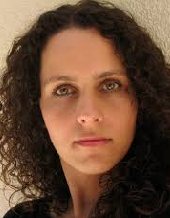 Petra Bachratá studied composition with Vladimír Bokes at the Academy of Performing Arts in Bratislava (Slovakia), where she completed a Master’s Degree in Composition. She participated at many composition courses abroad (IRCAM, Szombathely, Reichenau, Brian Ferneyhough, Ivan Fedele, Jonathan Harvey, Ivana Loudová, etc.). She also studied medicine at the Medical Faculty of Comenius University in Bratislava. After her studies she worked as doctor at the Neurology Clinic in University Hospital Bratislava and she completed her specialization in neurology. Since 2006 she is doctoral student of composition and electronic music at the University of Aveiro, Portugal.
Petra Bachratá studied composition with Vladimír Bokes at the Academy of Performing Arts in Bratislava (Slovakia), where she completed a Master’s Degree in Composition. She participated at many composition courses abroad (IRCAM, Szombathely, Reichenau, Brian Ferneyhough, Ivan Fedele, Jonathan Harvey, Ivana Loudová, etc.). She also studied medicine at the Medical Faculty of Comenius University in Bratislava. After her studies she worked as doctor at the Neurology Clinic in University Hospital Bratislava and she completed her specialization in neurology. Since 2006 she is doctoral student of composition and electronic music at the University of Aveiro, Portugal.
 Linda Buckley is a composer from the Old Head of Kinsale currently based in Dublin. Her music has been described as “exquisite” (Gramophone) "strange and beautiful" (Boston Globe), “glacially majestic” (RTÉ Ten) with “an exciting body of work that marks her out as a leading figure in the younger generation of Irish composers working in the medium” (Journal of Music). Her work has been performed by the BBC Symphony Orchestra, Dresden Sinfoniker Orchestra, Fidelio Trio, Irish Chamber Orchestra, Trio Scordatura and at international festivals including Bang on a Can at MassMoCA, Gaudeamus Music Week Amsterdam and Seoul International Computer Music Festival.
Linda Buckley is a composer from the Old Head of Kinsale currently based in Dublin. Her music has been described as “exquisite” (Gramophone) "strange and beautiful" (Boston Globe), “glacially majestic” (RTÉ Ten) with “an exciting body of work that marks her out as a leading figure in the younger generation of Irish composers working in the medium” (Journal of Music). Her work has been performed by the BBC Symphony Orchestra, Dresden Sinfoniker Orchestra, Fidelio Trio, Irish Chamber Orchestra, Trio Scordatura and at international festivals including Bang on a Can at MassMoCA, Gaudeamus Music Week Amsterdam and Seoul International Computer Music Festival.
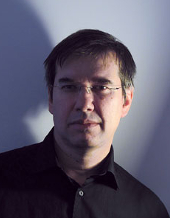 Arturo Gervasoni studied at the National University of Córdoba (Argentina). He took classes with Helmut Lachenmann, Luigi Nono in Argentina, and Tristan Murail, Philippe Manoury (IRCAM) and Peter Eötvös in France. He has a Master’s and a Doctor’s degree in musicology (2007) from Rennes University. His music could be understood as a research of “sound stimulations” through energy and character. His works, of a sequential type, are discursive at times. Many of his works are of litterary and philosophical inspiration from authors such as Jorge Luis Borges, Alberto Manguel, Arthur Danto. He is also inspired by works from other composers, and by moments of recent or farther history, which suggest him pieces that he calls “derivative”. His works have been played and diffused in different countries such as the USA, Mexico, Argentina, France, Great Britain, Italy, Germany, Spain, Japan, Chili, Brazil and Russia. His production includes chamber music, music for orchestra, vocal music, electroacoustic music and music for dance and theatre.
Arturo Gervasoni studied at the National University of Córdoba (Argentina). He took classes with Helmut Lachenmann, Luigi Nono in Argentina, and Tristan Murail, Philippe Manoury (IRCAM) and Peter Eötvös in France. He has a Master’s and a Doctor’s degree in musicology (2007) from Rennes University. His music could be understood as a research of “sound stimulations” through energy and character. His works, of a sequential type, are discursive at times. Many of his works are of litterary and philosophical inspiration from authors such as Jorge Luis Borges, Alberto Manguel, Arthur Danto. He is also inspired by works from other composers, and by moments of recent or farther history, which suggest him pieces that he calls “derivative”. His works have been played and diffused in different countries such as the USA, Mexico, Argentina, France, Great Britain, Italy, Germany, Spain, Japan, Chili, Brazil and Russia. His production includes chamber music, music for orchestra, vocal music, electroacoustic music and music for dance and theatre.
 Jeff Morris is a composer, performer, and director of the PerfTech program at Texas A&M University (USA). He plays the laptop—building custom instruments and performance situations that allow audiences to consider the impact of techno-mediation on the human experience: presence, authenticity, and the passing of time. Often, this involves novel sounds, ways of moving on stage to play an instrument, and ways of building musical performances. He uses live performance to ask, “What does it mean to be human in the twenty-first century?”
Jeff Morris is a composer, performer, and director of the PerfTech program at Texas A&M University (USA). He plays the laptop—building custom instruments and performance situations that allow audiences to consider the impact of techno-mediation on the human experience: presence, authenticity, and the passing of time. Often, this involves novel sounds, ways of moving on stage to play an instrument, and ways of building musical performances. He uses live performance to ask, “What does it mean to be human in the twenty-first century?”
He studied composition with Butch Rovan at the Center for Experimental Music and Intermedia and studied improvisation with Butch Morris. He has presented works in the Milano Triennale museum, Onassis Cultural Center (Athens), Austin Museum of Art (Texas), Flea Theater (New York City), InterArts Center (Lund University, Sweden), and the Lyndon B. Johnson Presidential Library and Museum (Texas). Jeff also writes about ideas explored in his work, in international conferences like the International Computer Music Conference, In- ternational Society of Improvised Music conference, and Computer Art Congress, and in publications by Leonardo and IGI Global. Jeff also curates the Fresh Minds Festival of audiovisual art, and Weblogmusic, as well as several student performances and installations on campus and abroad.
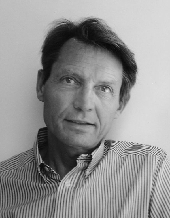 Jean-Claude Risset is both a musician and a researcher in acoustical physics. After a solid pianist education with Robert Trimaille (student of Alfred Cortot), who gave him the incentive to start a career as a pianist, he discovered composition between 1961 and 1964 : André Jolivet had him study musical writing with Suzanne Demarquez. In parallel, student at the Ecole Normale Supérieure de Paris, he becomes aggregated in physics in 1961 and Doctor in physical sciences in 1967: he then starts a career as a scientist in the field of electronics. A pioneer in computer music, as prove his works on sound synthesis and psychoacoustics, namely during his stays at the Bell Laboratories, he quickly gains an international recognition. He works in the field of scientific research at CNRS, at the "Institut Électronique Fondamentale de Pierre Grivet" from 1961 to 1971, at the Bell Laboratories in New-Jersey (USA), around Max Mathews and John Pierce between 1964-1965 and 1967-1969, a stay during which he develops his works on computer-geerated sound-synthesis and its musical applications (namely the simulation of instrumental sounds, sound illusions and musical paradoxes), in Orsay (1970-1971), then from 1972 at the "Centre universitaire de Marseille-Luminy", at Ircam from 1975 to 1979 and, eventually,at LMA (Laboratory of mechanics and acoustics) of the CNRS in Marseille, institution of which he remains Director Emeritus for research.
Jean-Claude Risset is both a musician and a researcher in acoustical physics. After a solid pianist education with Robert Trimaille (student of Alfred Cortot), who gave him the incentive to start a career as a pianist, he discovered composition between 1961 and 1964 : André Jolivet had him study musical writing with Suzanne Demarquez. In parallel, student at the Ecole Normale Supérieure de Paris, he becomes aggregated in physics in 1961 and Doctor in physical sciences in 1967: he then starts a career as a scientist in the field of electronics. A pioneer in computer music, as prove his works on sound synthesis and psychoacoustics, namely during his stays at the Bell Laboratories, he quickly gains an international recognition. He works in the field of scientific research at CNRS, at the "Institut Électronique Fondamentale de Pierre Grivet" from 1961 to 1971, at the Bell Laboratories in New-Jersey (USA), around Max Mathews and John Pierce between 1964-1965 and 1967-1969, a stay during which he develops his works on computer-geerated sound-synthesis and its musical applications (namely the simulation of instrumental sounds, sound illusions and musical paradoxes), in Orsay (1970-1971), then from 1972 at the "Centre universitaire de Marseille-Luminy", at Ircam from 1975 to 1979 and, eventually,at LMA (Laboratory of mechanics and acoustics) of the CNRS in Marseille, institution of which he remains Director Emeritus for research.

Clovis Schneider composes music for image. He started by composing for short movies made by cinema students. He then signed the score of the sound and light performance "Le cœur de l'océan" of the Oceanographic Museum of Monaco. In order to improve his musical language, he also composes contemporary music for concerts.
It is in 2016 that he reveals himself, winning several awards such as the prestigious Plume de Cristal for music composition for image at the Valence Festival, as well as an international prize of contemporary composition.
So far he has signed the score for around thirty short movies, animated films, documentaries and video games. He will be present at the Festival d'Aubagne 2017, participating in the Third person workshop and in a composition masterclass. He will also be at the Valence Scénario 2017 Festival to present the music he has composed for the Festival's 20th anniversary retrospective film and the advertising spot.
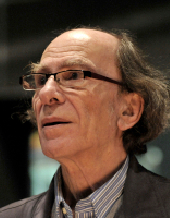
After studying at the National University of Cordoba (Argentina, 1959-1962) and also with Juan Carlos Paz in Buenos Aires, Horacio Vaggione acquainted himself with French electro-acoustic music through the radio and began to compose his first works (Ceremonia for tape, 1961). He took charge of the electro-acoustic studio of the Centre for Experimental Music he had founded at the University of Cordoba (1965). During the 1960s he visited the principal European electro-acoustic studios and experimented with digital sound synthesis as a scholar of the Fulbright Fund (1966) at the University of Illinois. In 1968 he joined Luis de Pablo in Spain and set up the group Alea. A composer-researcher at the University of Madrid (1969-1973) and then in various universities in North America (1974-1977) and Europe (from 1982), Horacio Vaggione was in residence at Ircam (Fractal C, 1984; Thema, 1985), at the DAAD in Berlin (1987-1988), before becoming lecturer at the University of Paris VIII (1989) and then research director at the École Doctorale Esthétique, Sciences et Technologies des Arts at the University of Paris VIII (1993). His output consists mainly of electro-acoustic compositions (Octuor, 1983; Préludes suspendus III,2009; Points Critiques, 2011), mixed music (Tar, 1987; Taléas, 2004) and purely instrumental music (Tahil for piano, 1992). Horacio Vaggione includes computer technology in his compositional processes, developing ideas of stratification, figuration, articulation, morphology and singularity.
Galerie Pictura, 18h
Braulas are small insects that used to live on bees. Hyperadapted to their hosts, the braulas can only live on honeybees. Since 1985 they have practically disappeared from Europe. In France they can only be found on the island of Ouessant. They are an outstanding piece of biodiversity.
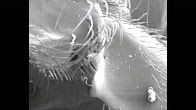
Musical composition on microscopic images of bees.
Galerie Pictura, 17h
After a few years of studying improvisation with my cello, I have aimed these last ten years to introduce the computer as a tool for improvisation in various contexts, from musical theatre to jazz to baroque music and dance. Retracing some of these experiences, I will present my main IT tool, the OMax software of which I will shortly explain the functioning. I will also show a few counterexamples of improvisations without computer as well as some of my more recent lines of research.
Galerie Pictura, 18h
Jeff Morris creates experiences that engage audiences' minds with their surroundings. His performances, installations, lectures, and writings appear in international venues known for cutting-edge arts and deep questions in the arts. He has won awards for making art emerge from unusual situations: music tailored to architecture and cityscapes, performance art for the radio, and serious concert music for toy piano, robot, Sudoku puzzles, and paranormal electronic voice phenomena. He curates the Fresh Minds Festival of audiovisual art from all over the world, serves as Editor-in-Chief of the International Journal of Art, Culture and Design Technologies, and created the Performance Technology (PerfTech) program at Texas A&M University (a Carnegie Tier One Research University and member of the elite Association of American Universities).
With examples from his own compositions for live sampling improvisation, feedback loops, and MusInfo's Sampo musical instrument, Dr. Morris will show how an artist's mindset enables science to reach domains ordinarily beyond its grasp: using the unreal to reason about reality and an open mind ready to capture information it wasn't expecting to find. He will also show how a scientific mindset can in turn liberate the humanities: systems thinking becomes art hacking.
1-4 June 2016
Galerie Pictura & Médiathèque de Bourges
In Finnish mythology the Sampo is a magical object that will make its owner wealthy. An installation shows a box - Sampo, whose content is the wealth of the works of composers and scientists diffused inside of it. Their knowledge and expertise have been transcribed through their works in pictures and sound.
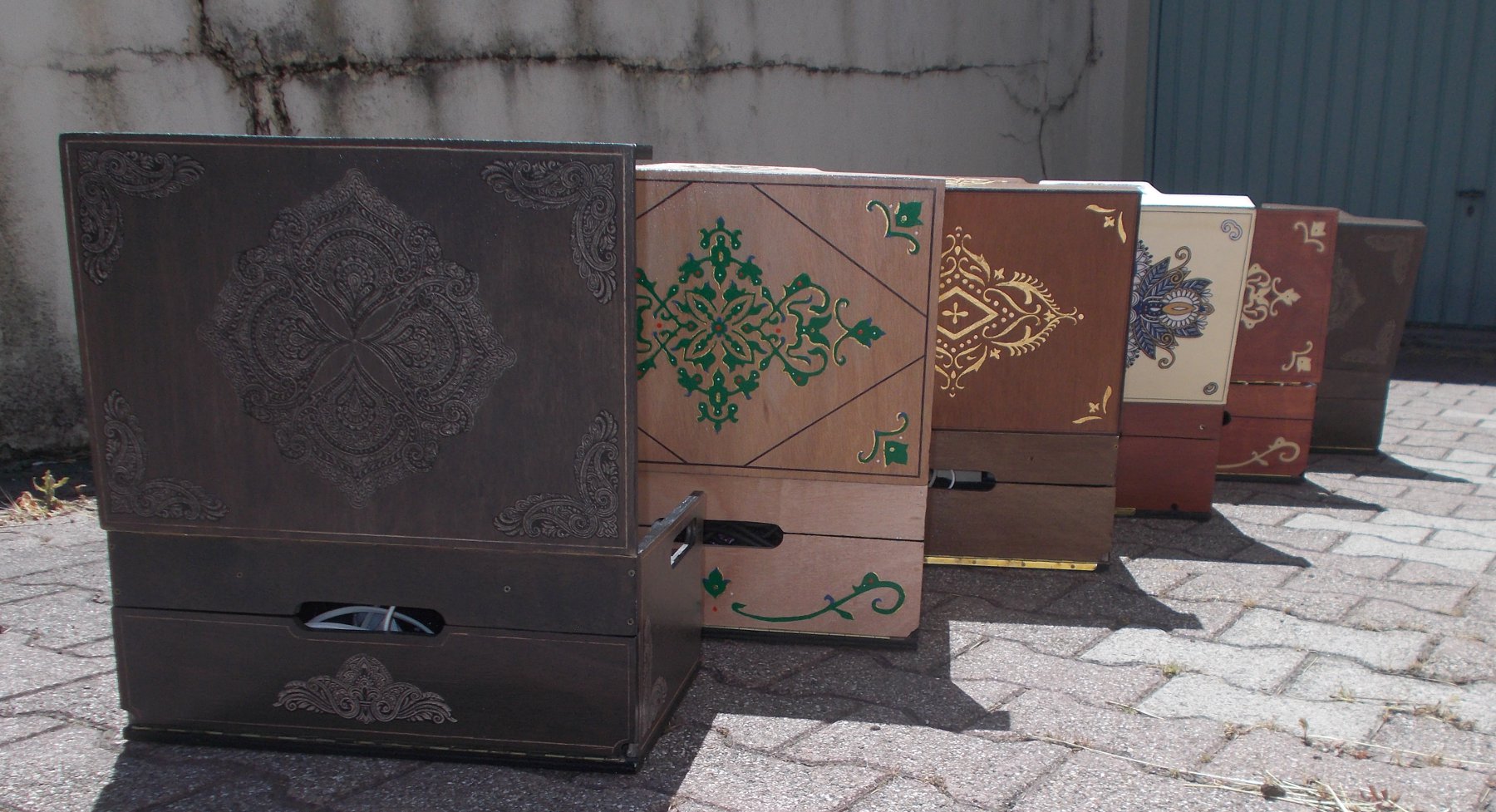
The audiovisual installations "Sampo - Magical Boxes" show audiovisual works collected during the 2016 Call for work on the theme "the Elements" : elements of naturen scientific and imaginary elements, elements of sound and music.
The works inside a box represent the intellectual and artistic wealth - knowledge and emotion - combined in one object that can be observed, watched and listened.
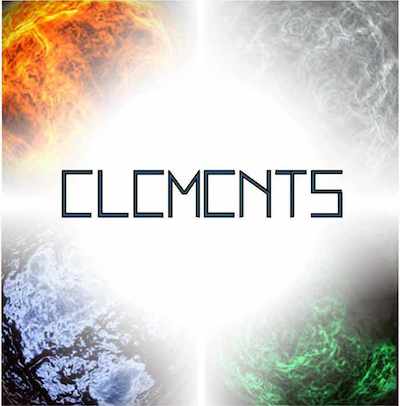
Each box plays a sequence of selected works. You can discover the first one when visiting the media library Médiathèque de Bourges. The installation is located in the multimedia section on the second floor.
Two other installations are open to public at Galerie Pictura, surrounded by an exposition on alchemy.
| Sergio Blardony | (Spain) | Tracto |
| Juan Manuel Sanchez | (Venezuela) | Birds Etude |
| Davide Wang | (Italy) | Sphairos |
| Marie-Claude Vidal | (France) | On arrête pas le progrès |
| Ana Paola Santillán Alcocer | (Canada) | ONEIROPHRENIA |
| Joungmin Lee | (USA) | 3 sounds |
| Jaime Reis | (Portugal) | Fluxus, Lift |
| Arshia Samsaminia | (Georgia) | Railroading in the East |
| Marco Busetta | (Italy) | Acqua esagonale |
| Benjamin O'Brien | (France) | along the eaves |
| Royer-Artuso & Neugebauer | (Canada) | Carex Siderosticta Plastid - Photosystem II |
| Aldo Rodriguez | (Mexico) | Landscape (2015) |
| Anna Terzaroli | (Italy) | Dark Path #4 |
| Manuella Blackburn | (United Kingdom) | Ice Breaker |
| Demian Rudel Rey | (Argentina) | Céfiro |
| Massimo Vito Avantaggiato | (Italy) | Atlas of uncertainty |
| Paolo Pastorino | (Italy) | Dimensione aggiuntiva |
| Kyle Vanderburg | (USA) | Reactions |
| Gino Favotti | (France) | Issus de l'évolution |
| Joungmin Lee | (USA) | Heterogeneous |
| Panayiotis Kokoras | (USA) | Mnemonic Generator |
| Alfredo Ardia | (Italy) | Studio N.1 |
| Nikos Koutrouvidis | (France) | Des Airs, des Eaux et des Lieux |
| Chin Ting Chan | (USA) | Zone 23 |
| Andy Thierauf | (USA) | Deep Submerge Number 6 |
| Alwin van der Linde | (Spain) | Glass Frequencies Geometry |
| Jonathan Robert | (France) | pHHp |
| Stanislav Makovsky | (France) | Sintro |